Dealers push back as listing costs rise
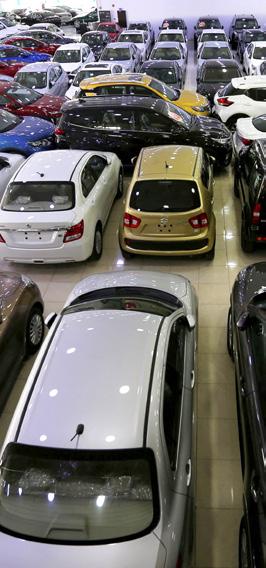

Car dealers are growing increasingly unhappy at the rate Trade Me Motors is increasing its prices to advertise on the website.
Some registered motor-vehicle traders say the market’s biggest listings site has delivered doubledigit percentage increases for the cost of package deals in the past two years and a similar jump is expected next year.
While bosses at car yards spoken to by Autofile don’t begrudge the company lifting its prices, many are unhappy with the size of the increases.

They also claim the market dominance of Trade Me, which has been operating for about two decades, means only advertising with rival sites isn’t currently viable.
Some dealers have reportedly reduced their online listings or downgraded packages with the online company to offset rising costs.
Trade Me has defended its offerings. It says it has invested
heavily in new features over the past year and its pricing “fairly reflects the value of our packages”.
Aaron Goodrick, sales manager of Rosetown Motor Group in Te Awamutu, Waikato, says the

cost of its advertising package has increased by $23,736 a year following new fees introduced by Trade Me Motors at the start of September.
“It feels like Trade Me has given us no real additional value despite substantial price increases for its packages,” he adds.
“We’ve made our point clear to the rep that we aren’t happy with the increase in fees. If Trade Me said it had improved the systems and could show us additional support in the product it’s providing that would be good but – in my opinion – it isn’t.”
Goodrick says Rosetown Motor Group has had to move from a package called bronze 75, which was $2,599 plus GST a month, to its new equivalent, starter 75 – “the most basic deal for 75 cars” – that costs $4,319 plus GST a month.

“That’s a substantial jump overnight for what we feel is essentially nothing more in terms of the package we receive.
“It seems to be a yearly increase
[continued on page 4] GLOBAL VEHICLE LOGISTICS NZ - JAPAN - AUSTRALIA - UK - SINGAPORE OCTOBER 2023 www.autofile.co.nz
p 23 Plugged in for super-car racing Interview with usedimports boss p 8 Green future for premier series p 24
THE TRUSTED VOICE OF THE NZ AUTO INDUSTRY FOR NEARLY 40 YEARS
Chairman of Drive Electric retiring p 14
Murmurs of discontent with Trade Me grow across the industry but company says it offers businesses ‘great value for money’
Some dealers have cut listings to offset rising advertising costs
LOAD IT SHIP IT TRACK IT CLEAR IT DELIVER IT !
BIGGER IS BETTER
move to new, much larger premises means we are to offer even more services to our dealer clients

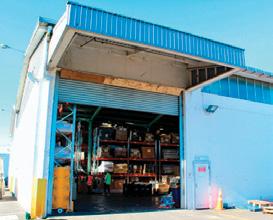
to door ro-ro vehicle shipping from Japan and Australia
Containerised vehicle shipping from anywhere in the world
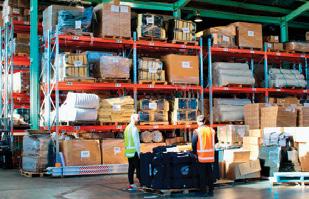
Vehicle tracking
VEHICLE SHIPPING
Approved MPI transitional facilities and cleaning services

GENERAL FREIGHT

VEHICLE TRACKING

SHIPPING SCHEDULE
Capping it all off is Jacanna’s SmartTrade Rewards Programme, you can earn points for almost any reward you choose

We are specialists in transporting and exporting all types of Vehicles, Commercial trucks, vehicles of Special Interest and other RORO Heavy Cargo & Machinery.
We have developed a worldwide network of Agents who understand the commitment required to service our demanding market.

Finding out where your vehicle is at any one time of the process, gives you the ability to manage the collection and processing of documents and payment on time.
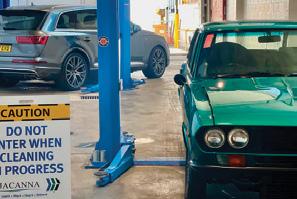
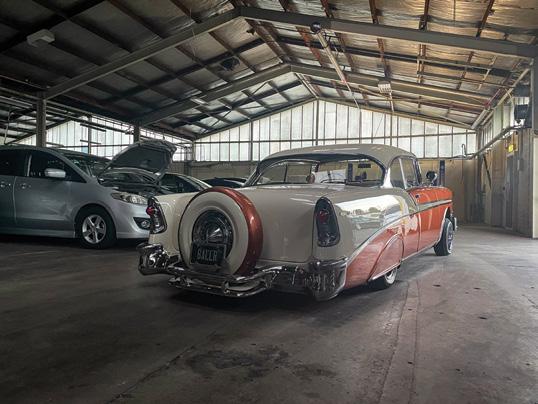

TRS and shipping services from Japan to New Zealand. www.jacanna.co.nz



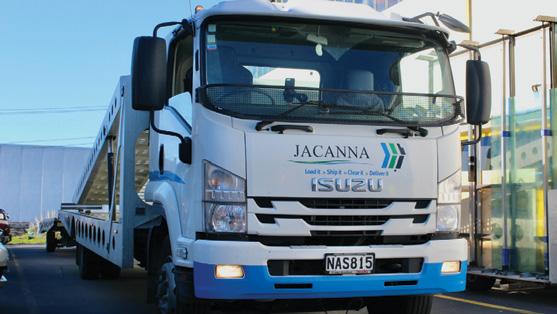
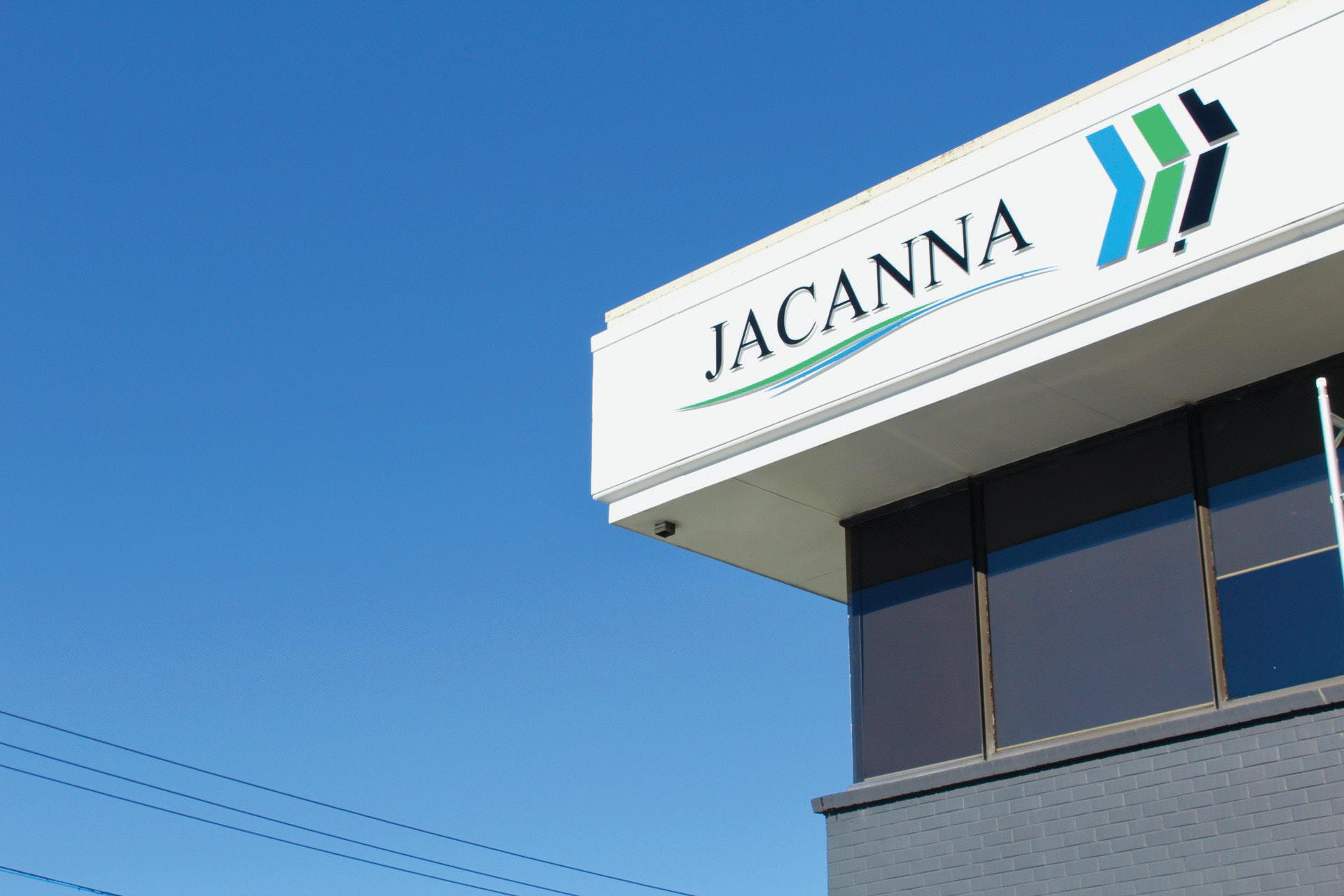

JACANNA.CO.NZ
www.jacanna.co.nz Tel: +64 9 825 0888
info@jacanna.co.nz Tel: +64 9 825 0888 Terms and conditions apply.
Rocky road ahead with user charges
Mark Stockdale’s take on extending RUC

National’s transport spokesman, Simeon Brown, was recently reported as saying all vehicles should be subject to road-user charges (RUC).
Only owners of diesel vehicles must pay RUC currently, but that’s soon to change.

National’s comments were made in reference to the fact the RUC exemption for electric cars is set to expire on March 31, 2024.
This means owners of battery EVs (BEVs), plug-in hybrids (PHEVs) and hydrogen vehicles – anything not wholly fuelled by petrol – will need to purchase RUC from April 1.

That has got me to thinking. What is happening to prepare owners of electric cars for the introduction of RUC from next April?
At the moment, there are about 82,000 BEVs and PHEVs that would be subject to these charges. My belief is most of these owners will have no experience of RUC with most having probably previously driven petrol cars.
Indeed, I think paying RUC at $76 per 1,000km, not including admin fees, will come as something as a shock to some.
I doubt they realise just how much of the cost of petrol is “road tax”. The answer is nearly half, or 46 per cent, of the price of a litre of petrol is made up of various taxes and levies, with 70 cents of that being “road tax”.
I further doubt new BEV and PHEV owners have been made aware of the temporary tax savings they’ve enjoyed, so an awareness campaign is needed to
bring them into the RUC system. But I wonder if any work is being done by the Ministry of Transport and NZTA to have this up and running by next April.
This all brings some questions to mind. Are current ways to purchase RUC – online, by phone or at outlets such as the AA – able to handle some 82,000 owners wanting to purchase RUC all at once? Or will this looming demand be spread out over a period of 12 months?
Also, what are the current odometer readings of these 82,000 BEVs and PHEVs, which are needed for enforcement. When you buy RUC, it’s paid in advance. For example, if your odometer states 40,000km and you buy 5,000km RUC, then the police can check the RUC haven’t expired if the odo reads less than 45,000km.
The NZTA needs to know the starting point. The best way to collect that is at warrant of fitness (WOF) time, which for most vehicles is once a year, so how is the agency to get readings by next April?
It gets worse, however. New vehicles aren’t subject to an annual WOF for the first three years, and there have been a lot of BEV and PHEVs registered in the past couple of years, so the NZTA has no way of knowing their current mileages.
Will the agency rely on a selfdeclaration, such as taking a photo of the odometer? Hummm. There are a few things to be sorted in the next six months if the current RUC exemption for EVs is still intended to expire by the end of March 2024. I’m not betting on it.
DIRECTORS
Brian McCutcheon brian@autofile.co.nz ph. 021 455 775

Darren Wiltshire dazzz@autofile.co.nz ph. 021 0284 7428
DESIGNER
Adrian Payne arpayne@gmail.com
EDITOR
Darren Risby ris@autofile.co.nz
JOURNALISTS
Sue Brebner-Fox sue@autofile.co.nz
Matthew Lowe matthew@autofile.co.nz
MOTORSPORT Mark Baker veritas.nz@xtra.co.nz

Autofile magazine is also available online as a readable file or downloadable as a PDF. Subscriptions are available at Autofile Online – www.autofile.co.nz Back copies are also available on the website.
Copyright: Published monthly by 4Media Ltd
All statements made, although based on information believed to be accurate and reliable, cannot be guaranteed, and no liability can be accepted for any errors or omissions. Reproduction of Autofile in print or digital format in whole or part without written permission, whether by copying or any other means, is strictly forbidden.
All rights reserved. ISSN 0112-3475 (print) ISSN 2350-3181 (online)
www.autofile.co.nz 3 Vehicle Inspection NZ Entry Certification Specialists 0800 GO VINZ VINZ.CO.NZ • Entry Certification • Vehicle Appraisals • Pre-Purchase Inspections • Warrant of Fitness (WoF) • Certificate of Fitness (CoF) • Road User Charges • Registration & relicensing • Exhaust emission testing
Call Steve Owens now on 021 947 752 GUEST EDITORIAL
MARK STOCKDALE Principal technical adviser Motor Industry Association
now regardless of what changes are or aren’t being made to Trade Me’s offerings. I understand prices increase and if they had gone up by $300 or $400 a month, then it would be okay. We’ve been looking for a while at how we can limit or reduce additional costs for our listings, but there’s no real way of avoiding them. There’s no lower package with Trade Me than the starter one we have.”
Goodrick notes the alternative to paying increasing fees would be to list elsewhere, but he says there’s no comparable alternative.
“Unless all dealers went from Trade Me at once, there’s little that will happen to limit price rises and we’re likely to keep getting substantial increases.”
Matthew Foot, dealer principal at Brendan Foot Supersite in Lower Hutt, also says it would be good to see some competition for Trade Me because he describes its prices as “becoming untenable”.
“Year-on-year we have had increases from Trade Me, which
has virtually a monopoly position in the market given the volume of listings it has from dealers and the public, but as an overhead for business it’s almost becoming unrealistic to use,” he told Autofile.
“We’re a large-volume dealership and need to list a lot of cars. But our prices with Trade Me increase every year. There’s no discussion or negotiation. If prices keep going up, then I think at some point some of the dealers will have to walk away from it.”
Nelson Cottle is the sole director of Auto Court in Dunedin. He says:
“The service Trade Me Motors provides is a great sales tool and the majority of our advertised sales come from it. That said, everything has got more expensive – from Trade Me’s listings to wages, paint and panel. All this means dealers’ margins aren’t getting any bigger as their overheads climb.
“As well as overheads going up, the approaching election means business has slowed down and other costs increasing doesn’t help.”
He adds there is a lack of competition in the market and no other company really compares to what Trade Me does.
“If there was another similarsized company on an equal footing, Trade Me would probably have to be more competitive,” says Cottle. “It’s more likely its prices would have stayed down, although that’s hard to judge.
“Times are tough for everyone. During Covid-19, Trade Me gave dealers some relief and that was much appreciated.”
He suggests it would be helpful if Trade Me considered returning to its pre-September prices “for their long-term loyal customers in the meantime”.
Elliot Feringa, director of Select Autos Tauranga, also believes Trade Me Motors’ fees are high but says it can only charge what it does because it gets results.

“As dealers, we’re our own worst enemies because we won’t all band together on issues like this,” he says. “Doing that is the only way we may possibly see some price relief.
“I baulk at what our bill is but it’s the best way to get in front of buyers.
Trade Me can just keep increasing the fees because it provides results no one else can at the moment.”
As fees increase, Feringa says his business is listing fewer vehicles on Trade Me and the ones it does are being promoted at a higher tier package. While he acknowledges the value Trade Me offers in generating sales, he adds if prices keep going up there should at least be a better website search function to justify those increases.
Martin Harcourt, of Value Cars Warehouse in Christchurch, says Trade Me has a dominant market position and that means when advertising prices increase, dealers have to “suck it up”.
His company spends about $50,000 a month on advertising across various mediums.
“Prices with Trade Me are often being put up and, while I don’t like its fees, I accept everyone puts prices up at some stage,” adds Harcourt.
“The difficult thing is if you’re in the auto business, you need to be on Trade Me because that’s where everybody goes to buy a car.
“They’ve done a good job of securing their place in the market. I think they’re too expensive and keep trying to get more money with new features.
“Having a better relationship with their customers would be a good start because when it comes to dealing with the radio stations, for example, there’s a lot more feelgood factor.”
‘COMPETITIVE’ PRICING
Jayme Fuller, Trade Me’s head of motors, confirmed the company updated the price of its packages for dealers from September 1. The new fees are based on inventory size, the package a business selects and whether it is a franchise or independent dealership.
“This price change is not a decision that we took lightly,” Fuller told Autofile. “However, we believe we still offer great value for money and our pricing is very competitive.”
For most dealers who are independent, the price increase depends on the number of “slots” in their selected listing scheme and the package tier chosen.
4 www.autofile.co.nz
If you are a forward thinking motor vehicle trader, or financier, looking for a trusted vehicle insurance partner, call Quest. Contact: Russell Bowater 021 790 365 russellb@questinsurance.co.nz QUEST INSURANCE OFFERS: an independent choice Mechanical Breakdown Insurance – backed by AA Roadside Assist Comprehensive Motor Vehicle Insurance Lifestyle Protection Insurance Credit Contract Indemnity Insurance Mechanical Breakdown Insurance for Electric and Hybrid Vehicles Guaranteed Asset Protection Insurance
news [continued from page 1]
Elliot Feringa, director of Select Autos Tauranga
t This ranges from packages of 10 to 700 slots and the tiers of bronze, silver, gold, platinum, platinum plus and total boost.
Fuller adds most independent dealers, based on Trade Me’s most popular packages, saw a $12 to $16 price increase per slot last month and most franchise dealers had a $16 to $21 increase per slot.

“We provide dealers with a variety of package options so they can choose an option that best suits their business needs and budget.
“We review our pricing from time-to-time and always aim to offer good value for money. We believe our new pricing fairly reflects the value of our packages, the audience we deliver and advancements we’ve made to drive buyer engagement.
“All dealers were given the opportunity to defer the [September] price increase until March 1, 2024, if they upgraded their package to the next tier before August 31. Dealers could choose to downgrade their package at any time before or after March 1.”
Fuller says Trade Me is continually making improvements to its motors platform to make it easier for dealers to provide a “great experience” for their buyers. Recent upgrades include feature enhancements, and back-end investments in tools and integration.
“For the past 20 years, we’ve worked hard to help thousands of dealers launch and grow their businesses and reach an audience they’d never have found without us.
“In the past year, we’ve invested heavily in new features such as improved market and performance analytics reporting, new digital retailing tools, the ability to list vehicles in transit, new search filters and dealer service functionality – this gives dealers the ability to showcase their workshops, parts, trade-in services, finance, warranties and more on their listings.
“We value our relationship with dealers greatly. We work hard to provide them with a trusted platform with great features that Kiwis look to first when buying a
vehicle. We also provide dealers with insights into key customer trends and support to enable them to grow their business with dedicated account managers advising on how to get the most value out of their package.”
The increasing prices come after Trade Me’s parent company posted a net loss of $2.3 million for the financial year to the end of June 2022, the latest financial figures publicly available.
Titan Parent NZ’s loss for 2021/22 marked a downturn from a $4.3m profit in the previous fiscal year, financials filed with the Companies Office show.

Total revenue climbed from $299.4m to $348.7m over the same timeframe, while earnings before interest, tax, and fair value and foreign-exchange movements rose from $107m to $116m.
The company’s classifieds business brought in $225.6m in revenue, which included $93.5m from motors, up from $182.8m during the 2021 year.
www.autofile.co.nz 5 news
Unless all dealers went from Trade Me at once, there’s little that will happen to limit price rises
– Aaron Goodrick, Rosetown Motor Group

6 www.autofile.co.nz
Benefits of Assurant EV One vs other MBI products
More Protection
•Lithium-ion/EV battery coverage for 325,000km - including defects, failures and general battery degradation
•The lithium-ion/EV battery will be repaired or replaced if capacity percentage drops below 70%
•Cover for wear-and-tear maintenance items that aren’t included in factory warranty
•Annual vehicle inspection including testing of battery health
Better Protection
•Developed by industry-leading F&I experts
•Extends coverage for up to 2 years past the original factory warranty
• Added benefits including emergency roadside assistance and substitute transportation reimbursement

Flexible Protection
•Designed to meet the needs of those who own used plug-in hybrid and battery electric vehicles
•Vehicle protection regardless of technology or eligible brand
*Terms and Conditions apply
Available now! Talk to our team to find out more. shannon.beech@assurant.com
T
*
voice’ for industry
Greig Epps is determined to see the Imported Motor Vehicle Industry Association (VIA) be regarded by decision-makers and officials as a voice to listen to and for it to be involved in “important conversations” affecting the sector.
After taking up his position as VIA’s chief executive last month, he spoke to Autofile about his ambitions for the organisation and what he hopes to bring to his latest role.
He believes the used-imports industry has a significant part to play in helping New Zealand transition to a low-carbon economy but notes changing the make-up of our fleet needs to be done gradually.

One of his main goals is to ensure VIA is party to any discussions the government is having about industry regulations.
“I want VIA to be a leading voice on issues affecting the transport sector by representing the views of members and providing strong arguments about regulatory frameworks and activities that will allow our members’ businesses to operate effectively,” explains Epps.
“VIA needs to be seen as a respected and trusted voice on
issues through the way we behave and the transparency we show in conversations with officials.
“I want it to be regarded as a voice to listen to and that it continues to be involved in the important conversations.”
Epps is happy to be back in the automotive sector after spending a year as manager of regulatory affairs at the Insurance Council of New Zealand following eight years at the Motor Trade Association (MTA).

“The role at the Insurance Council was about stretching into a new area and checking things out. That went well and I learned quite a bit, especially about how different associations work.
“When the VIA opportunity presented itself, I thought, ‘let’s try that and get back into the
TO NEW
ON TIME, EVERY TIME
automotive industry’. From a professional level, there was the chance for progression. I’ve been in senior management roles for a long time. Here was a chance to step up and lead an organisation.”
Beyond his own personal development, Epps is keen to see the imported vehicle industry help progress New Zealand’s transition to a more efficient, low-carbon transport economy.
He says imported cars have provided affordable transport for many Kiwis over the years and offer people the opportunity to buy safer, more efficient vehicles.
“I saw the opportunity to come in and help position VIA and the imported vehicle industry as a key player in the transition to a lowcarbon future.
“I use the word transition because I think people need to remember that’s exactly what it is. No goal is ever achieved overnight, especially a huge goal such as moving a fleet of four million vehicles from its current make-up to something else.
“At this point, and potentially across the next decade, the new model, top-of-the-line electrified vehicles are still going to be out of reach for the average New Zealander, but the average New Zealander still wants to do something about reducing emissions and playing a part in the mitigation of climate change.

“We need to play a role in the transition of our fleet, which is going to be a progressive change to something different.”
Epps, who started as VIA’s chief executive on September 20, says one of the first things he has to do is reorientate his perspective after his time at the MTA was spent looking at issues from the in-service side of the sector, such as dealers, service stations and repairers.
While VIA does have retail members, it also covers companies across the supply chain and he’s eager to find out what the views and challenges are for those
TOYOFUJI SHIPPING SCHEDULE
8 www.autofile.co.nz Contact:
Stone adam.stone@toyofujinz.co.nz www.toyofujinz.co.nz
T/S = Tranship to next available TFS vessel Toyofuji
JAPAN NEW ZEALAND Moji Osaka Nagoya Yokohama Auckland Lyttelton Wellington Nelson Dream Jasmine 28 11 Oct T/S Trans Future 5 149 19 Sep 21 Sep 22 Sep 11 Oct 13 Oct 15 Oct Dream Angel 38 26 Sep 28 Sep 29 Sep 1 Oct 14 Oct 17 Oct 18 Oct T/S Trans Future 7 146 25 Sep 26 Sep 30 Sep 17 Oct T/S T/S T/S
Adam
FROM JAPAN
ZEALAND
vessels Voyage
news
‘Leading
We need to play a role in the transition of our fleet
– Greig Epps, VIA
involved in different parts of the industry.
“I understand the framework of where vehicles are coming from and how they’re brought in but, for me, it’s about getting into the detail of those operations of sourcing and delivery,” he notes.
“What do source markets look like? What are we dealing with in those markets? And then I need to find out more about the intricacies of the compliance process and getting these vehicles across the border and onto the roads in New Zealand – plus, what the market looks like for those vehicles and what’s the demand.
“In conversations I’ve had so far, it sounds like there’s still good demand despite the economic pressures some people are facing.”
When advertising for a new chief executive officer earlier this year, VIA stated it ideally wanted that person to be based in Wellington. Epps is in the capital and says an advantage of being there is it allows more direct
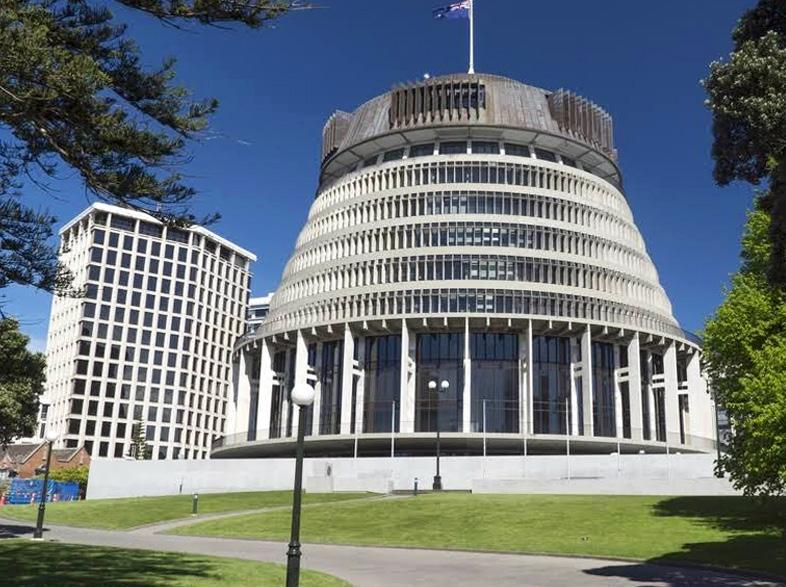
engagement with key industry officials and stakeholders.
He notes government ministers and officials, as well as policy people for the Motor Industry Association, MTA and AA, are all located there and “we bump into each other all the time at different events”.
“The ability to have the immediacy of talking to people in person and be close to them is going to be invaluable.
“I will also need to be heading up to Auckland a few times a year. We want to try to have at least two physical council meetings a year. I will want to be there in person
for those, and get out and see the sites and operations of our members.”
ISSUES ON THE AGENDA
Looking ahead for the industry, both short and long-term, Epps says there are a number of matters he and his colleagues need to be aware of to best support VIA members.

Interest rates, labour costs because of the tight labour market, increasing fuel prices and rising transportation costs are all impacting the way members – and businesses across the broader economy – are able to work.
Epps adds: “Once we adapt to whatever those supply-chain costs and pressures are, the long-term focus will be ensuring we can still bring in a good range of vehicles that meet whatever criteria governments have set for us in terms of the types of vehicles they want to see coming in.”
However, he notes that if the future political desire or rules for bringing vehicles into the country are only set to sell electrified models, then there will be challenges in terms of the number of units available in source markets.
“Japan has lagged behind in producing full electric vehicles [EVs] for its own market and thus it creates a smaller pool of EVs for us to try to pick from.
“New Zealand isn’t the only country that tries to buy from Japan so we’re in competition with other countries also trying to put in place low-carbon initiatives. The pressure on that small pool is only likely to become greater and we’ve
[continued on page 10]
www.autofile.co.nz 9
t news
Greig Epps says his being based in Wellington will give VIA direct engagement with industry officials
been fortunate with the large number of hybrids in Japan.
“The key thing is that we need to be looking at source markets and trying to get the best vehicles we can. Talking about the best steps for the transition to a low-carbon economy we need to recognise that for the time being, perhaps the next 10 years, we still need to make the most we can out of efficiency gains in internal combustion engine [ICE] vehicles and continue bringing in small ICEs.”
Another issue creating concern is some shipping lines deciding to restrict the EVs they carry after high-profile global incidents when roll-on, roll-off vessels have caught fire. Insurance companies are also looking closely at the potential risk.
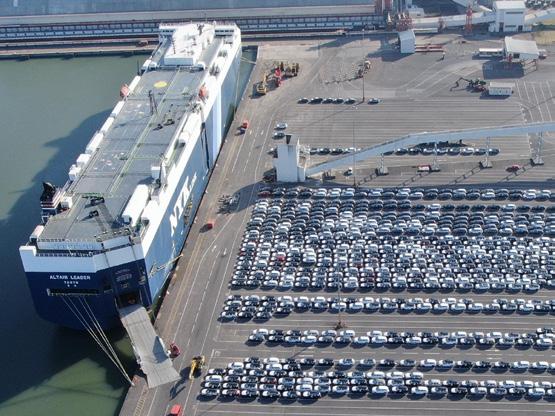
“We need to keep an eye on what’s happening in this space,” says Epps. “The worst impact in this area is uncertainty for the industry. I haven’t yet seen a report on the recent incidents involving ships that officially states
the issue has been EVs causing the fires. If the willingness of shipping lines to bring in EVs is reduced, what then is the government’s plan B in terms of helping us bring in vehicles it wants? If it wants EVs and we can’t ship them, we’re going to have to find another solution.”
Vehicle exhaust-emissions standards will also be on the agenda for Epps and his VIA colleagues, with new rules set to be introduced over the coming years.
The association has already made a submission to the government about its proposed introduction of Euro 5 and 6
standards and questions the methods officials have used for establishing the compatibility of rules from different jurisdictions.
“When vehicles are coming from a mix of origins, for officials to land on a particular set of standards from one region doesn’t necessarily help industry to understand how we can bring cars in that comply here when they are subject to different testing regimes. That’s something we hope we can continue to have dialogue with officials about.”
TALKS ON WAY AHEAD
The prospect of political upheaval is another matter on the mind of VIA’s new boss as the outcome of the general election on October 14, which was unknown when this issue of Autofile went to print, may have potential implications for automotive businesses across the supply chain.
Epps points out that whether National or Labour end up being the main party in power, there will be new ministerial line-ups and VIA expects to see change on the political and policy front through the end of this year and into 2024.
“As an industry association that has talked to both sides of the political divide over the years because governments change, we need to be able to have the same conversations with different parties on a range of issues,” he says.
“The issues don’t change for us. It’s simply a matter of understanding what position any new government might be taking and having an analysis of that to know what it means for our members.
“Once the next government has been formed, we need to get in there and have a conversation with those politicians about where to from here and establish what VIA needs to do to help its members.
“The key thing is to be able to have those conversations. Our message doesn’t necessarily change depending on who is in government because we’re always looking to promote the interests of members. We need to be able to have conversations with both sides.”
Illegal trader fined
An unregistered dealer from south Auckland has been prosecuted for breaching the Motor Vehicle Sales Act (MVSA).
Michael Costello, of Manurewa, was convicted after the Ministry of Business, Innovation and Employment (MBIE) charged him with one count of trading while being unregistered.
The 40-year-old had 23 vehicles registered in his name between October 30, 2017, and October 29, 2018. They ranged from a Holden Commodore to a Suzuki motorcycle and were subsequently, and relatively quickly, transferred into other people’s names.
At a court hearing earlier this
year, Costello claimed his driver’s licence was used to transfer vehicles without his knowledge or permission. The judge didn’t find this claim to be credible or reliable.
He was sentenced at Manukau District Court last month to a reduced fine of $5,500 and ordered to pay $500 towards legal costs.
The judge agreed with the prosecutor’s submissions it should be in the $14,000 to $16,000 range. However, downwards adjustments were made to account for Costello’s personal circumstances.
Duncan Connor, registrar of motor-vehicle traders, says: “MBIE will not hesitate to investigate and prosecute those who deliberately breach the MVSA.”
10 www.autofile.co.nz
[continued from page 9] news
Contact us today 09 966 1779 www.jevic.com SP E C I A L IS T S I N PRE‑SHIPMENT INSPECTIONS ? MPI biosecurity inspections Biosecurity decontamination Heat treatment NZTA border inspections Odometer verifications Pre-export appraisals Lost documentation reports
New Zealand faces competition from other countries trying to source EVs from Japan
a faster and more flexible way to get behind the wheel
New Zealand’s non-bank vehicle lending specialists, just got faster and even more flexible.

We offer a first-tier proposition, second-tier finance options, and wholesale floorplan finance. Our flexible solutions get your customers on the road faster and keep you moving forward with automated systems for smooth, uninterrupted journeys.
We provide access to an experienced team of lenders, outstanding personalised seven days a week service and nationwide coverage. We work where you work.
Curious to find out more?
Lee Robson, National Sales Manager, NZ Dealer 027 688 9895 | lee.robson@avantifinance.co.nz
Nicole Remkes, NZ Broker Manager, Auto & Consumer 021 599 729 | nicole.remkes@avantifinance.co.nz
www.autofile.co.nz 11 Lending criteria, fees, terms and conditions apply.
*For complete and correct applications which meet our responsible lending criteria. Fees, terms and conditions apply. Our process will take longer if the application is not complete and/or we require further information in order to make a credit decision. NEW VEHICLE FINANCE brandedfinancial.co.nz USED VEHICLE FINANCE avantifinance.co.nz
Celebrating success in finance
Arecent arrival in the finance sector impressed industry judges and walked away with a top award, thanks in part to his “passion for improving complaints processes”.
Michael Bushell, Avanti Finance’s manager of complaints and training, scooped the rising star award at an event organised by the Financial Services Federation (FSF).
He was among a host of winners at this year’s Crediting Excellence Awards, which recognise individuals and companies in the non-banking lending sector, and showcase the positive impact FSF members have on the industry.
Bushell, who prior to joining Avanti was a specialist investigator in NZ Police’s asset recovery team, won the award that recognises professionals new to the industry who demonstrate outstanding


achievement and commitment to the responsible financial services sector.


“What stood out in Michael’s entry was his proactive work to improve processes and his passion for improving complaints processes in particular,” note the judges.

Other successes on the night

came from hummgroup, Centrix and DebtManagers, while among the finalists were individuals from Protecta Insurance, Speirs Finance Group and the latter’s Yoogo Fleet division.
Lyn McMorran, the FSF’s executive director, says the awards night was a chance to acknowledge the positive borrowing experience its members deliver to 1.7 million New Zealanders.
This year’s judging panel consisted of Andrew Mitchell, financial mentor team lead –kaiwhakahaere putea at the Salvation Army, Susan Taylor, Financial Ombudsman and chief executive officer of Financial Services Complaints, and Chapman Tripp partner Luke Ford.
The gala dinner in Auckland on
September 19 followed the FSF’s conference, which this year put the spotlight on the environmental, social and governance qualities of finance companies.

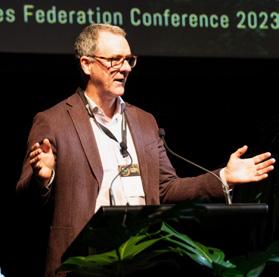
McMorran notes the event delivered attendees insights into trends in financial services domestically and abroad, as well as the chance to network with delegates, experts and officials.
She adds the sustainability focus was about organisations exploring positive impact beyond the balance sheet, and was a chance to think about what more they can be doing for their customers and community.
“The financial services sector has been hit with legislative review after review over the past few years,” says McMorran.
“When all time and investment is forced on constant compliance changes, it leaves little room for blue-sky thinking, innovation and ideas to help a sector to grow and its customers to thrive.
“We want to reignite that enthusiasm for pioneering innovation and ideas that we know our financial services sector is ready for.”
The conference programme also covered topics ranging from cyber security in vehicle finance to customer trust, sustainability and the general election.

12 www.autofile.co.nz
news
DriveText leverages a database of over 75 vehicle features to craft captivating marketing descriptions for every vehicle in your inventory. Contact: Angela Humble p: 0800 1 DRIVE (0800 137 483) m: 021 513 555 e: ange@drivetext.co.nz TIRED OF WRITING CONTENT FOR YOUR VEHICLE LISTINGS? www.drivetext.co.nz Includes specifications and features for every vehicle Deliver content that resonates with your target audience Save time and money by automating content Enhance ad spend to make listings work harder We make your advertising spend more efficient!
Michael Bushell, of Avanti Finance, winner of the Autosure Rising Star Award
Charles Whiting, of DebtManagers, receiving the community and sustainability award from Lisa Postlewaight, of Equifax
Todd Hunter, chief executive officer of Turners Automotive Group and FSF executive committee member
From left, Joe Davis, Nanogirl founder and media commentator, Neeraj Lala, of Toyota NZ, Angus Luffman, of Equifax NZ, and Michelle Herlihy, of Speirs Finance Group
WINNERS ON THE NIGHT
Autosure Rising Star: Michael Bushell, of Avanti Finance.
Finalists: Brendon Clark, of hummgroup, and Matthew Fung, of Speirs Finance Group.
Centrix Workplace Champion: Rebecca Emery, of hummgroup.


Finalists: Josh Aloua, of Avanti Finance, and Jo Clews, of DebtManagers.
Provident Insurance Leadership Award: Monika Lacey, of Centrix.
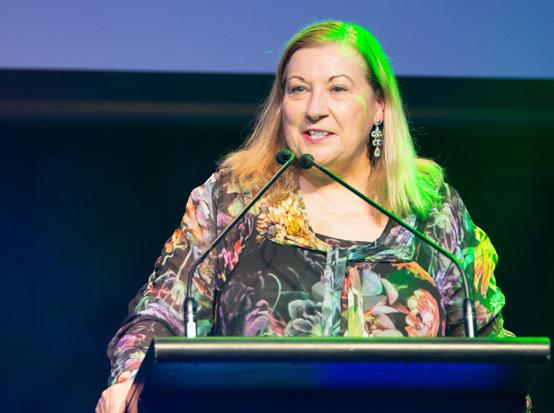
Finalists: Kieran Stott, of DebtManagers, and Shannon Beech, of Protecta Insurance.
Happy Prime Team Spirit Award: DebtManagers’ field agent team.
Finalists: Yoogo Fleet, a division of Speirs Finance Group, and Avanti Finance’s people and capability team.



Speirs Finance Innovation Award: Centrix.
Finalists: Equifax and Resimac.
Equifax Community and Sustainability Award: DebtManagers.
Finalists: Speirs Finance Group / Yoogo Fleet and IDCARE.

t It featured regulatory sessions by representatives from the Commerce Commission, Financial Markets Authority and Ministry of Business, Innovation and Employment. A panel discussion on environmental, social and governance issues featured Neeraj Lala, Toyota NZ’s chief executive officer, Michelle Herlihy, group chief executive officer of the Speirs Finance Group and YooGo,
and Angus Luffman, managing director of Equifax NZ.
Lala led criticisms about a narrow focus by government ministers on electric vehicles (EVs) as a solution to private transport.
Herlihy added the only way EVs will become affordable for the wider public is when corporate cars are sold into the second-hand market, which has been happening slower than expected.
If you’re
Zealand’s
www.autofile.co.nz 13
Our user-friendly,
Japanese auction website
been
Call us now and find out what everybody’s talking about. Ph. 03 377 6578 www.sbltd.co.nz
importing a vehicle, it should be with New
number-one elite vehicle importer. With over 30 years’ experience in the industry SBL is tried, proven, trusted and here to stay.
bespoke
has
developed and customised to meet the needs of our clients.
news
Lyn McMorran, executive director of the FSF, addressing delegates
Monika Lacey, of Centrix, recipient of the Provident Insurance Leadership Award
Zan Lopes, left, of Centrix, congratulates Rebecca Emery, of hummgroup
Chairman ready to ‘pass baton’ news
Mark Gilbert has announced he will step down as chairman of Drive Electric after leading the organisation for more than 11 years.
He says it’s time to “pass the baton” to someone else after seeing the number of electric vehicles (EVs) on New Zealand’s roads soar from just a few when he took up the post in June 2013 to more than 86,000 today.
Gilbert notified members of his plan to retire from the role at the group’s annual general meeting in Auckland on September 7.
His retirement will be effective from December 31 and Drive Electric plans to recruit some new directors from its membership and appoint a new chair before the end of the year.
“I have signalled my retirement from the role now to allow the board the time to think about what
they want to do for the future,” Gilbert told Autofile.
“There’s talk about potentially putting in place more full-time resource to help manage and look after Drive Electric.
“This is because the membership and income keeps
growing, and we can’t keep running the organisation on a voluntary and part-time basis.
“It is an opportunity for the board to formalise the way Drive Electric is run a bit more, but at the same time to keep on doing what it is doing.”
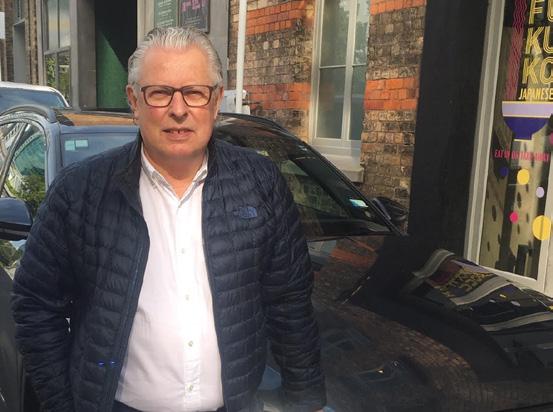
A large part of Gilbert’s career has been spent working for BMW, first as sales and marketing director in New Zealand from 1988-99.
He then spent five years as managing director of BMW Philippines before holding the same post at BMW NZ from October 2004 to December 2012. He was also president of the Motor Industry Association from September 2011 to December 2012.
Gilbert’s other past industryrelated roles have included being a director of the Dekra NZ board, the governing body of Vehicle Testing NZ, between 2017 and 2021, and being chairman of the Motorcycle Safety Advisory Council for eight years from July 2013.
He was also a member of the Ministry of Transport’s EVs programme leadership group from 2016 to 2020, and chairman of its clean-car sector leadership group between August 2021 and June 2023.
Gilbert notes that he committed to his decision to retire from Drive Electric when he was preparing his chairman’s report for the recent annual meeting.
“I was looking at it and thinking
it’s the 11th year I have been chairing this group since I retired from BMW and I think 11 years is probably enough,” he says.
“Drive Electric has grown in that time, the demands are greater and it’s just time to pass the baton.
“I came in when there were about 15 EVs on the roads in New Zealand and now there are more than 86,000. I’d like to think I have added some value to the organisation and the e-mobility movement.”
He predicts the challenges ahead for Drive Electric are not so much about the electrification of light vehicles, which are now clearly the future of the sector, but more about ensuring charging infrastructure is in place as well as reducing emissions from trucks, buses and other forms of transportation.
The group will continue to speak up on these subjects after becoming a key contributor to national discussions about the move to low-emissions vehicles over the years.
“We’ve matured from being a bit of a maverick organisation at the beginning, where I would perhaps be more provocative, to one the government and all the political parties value and seek our input,” says Gilbert.
“We’ve become trusted partners in the conversation about lowering emissions from vehicles and long may that continue.”
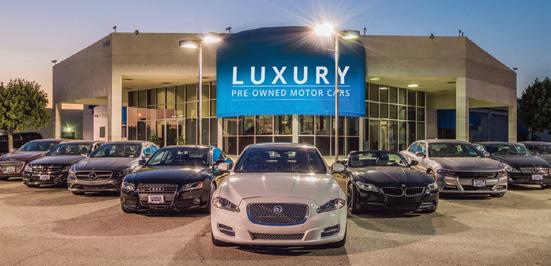
Gilbert will be carrying on as chairman of Auto Stewardship New Zealand (ASNZ), which will operate Tyrewise, New Zealand’s first nationwide regulated product stewardship scheme for recycling used tyres.
ASNZ is also looking at setting up schemes for recycling other parts of vehicles, including batteries from EVs.
“I will continue with ASNZ and the Battery Industry Group,” he says. “The areas of product stewardship and circular economy really interest me, and I’m keen to keep pushing on those fronts.”
14 www.autofile.co.nz
I’d like to think I have added some value to the organisation and the e-mobility movement
Contact us now to find out more A better deal for the Motor Vehicle Trade Ph: 09 320 5646 www.autobridge.co.nz n Flexible credit facility available to fund vehicles in transit or on your yard n Access to stock when you want to buy, not only when you have the available cash n Free up your capital and grow your business n Only available to registered motor vehicle traders
– Mark Gilbert
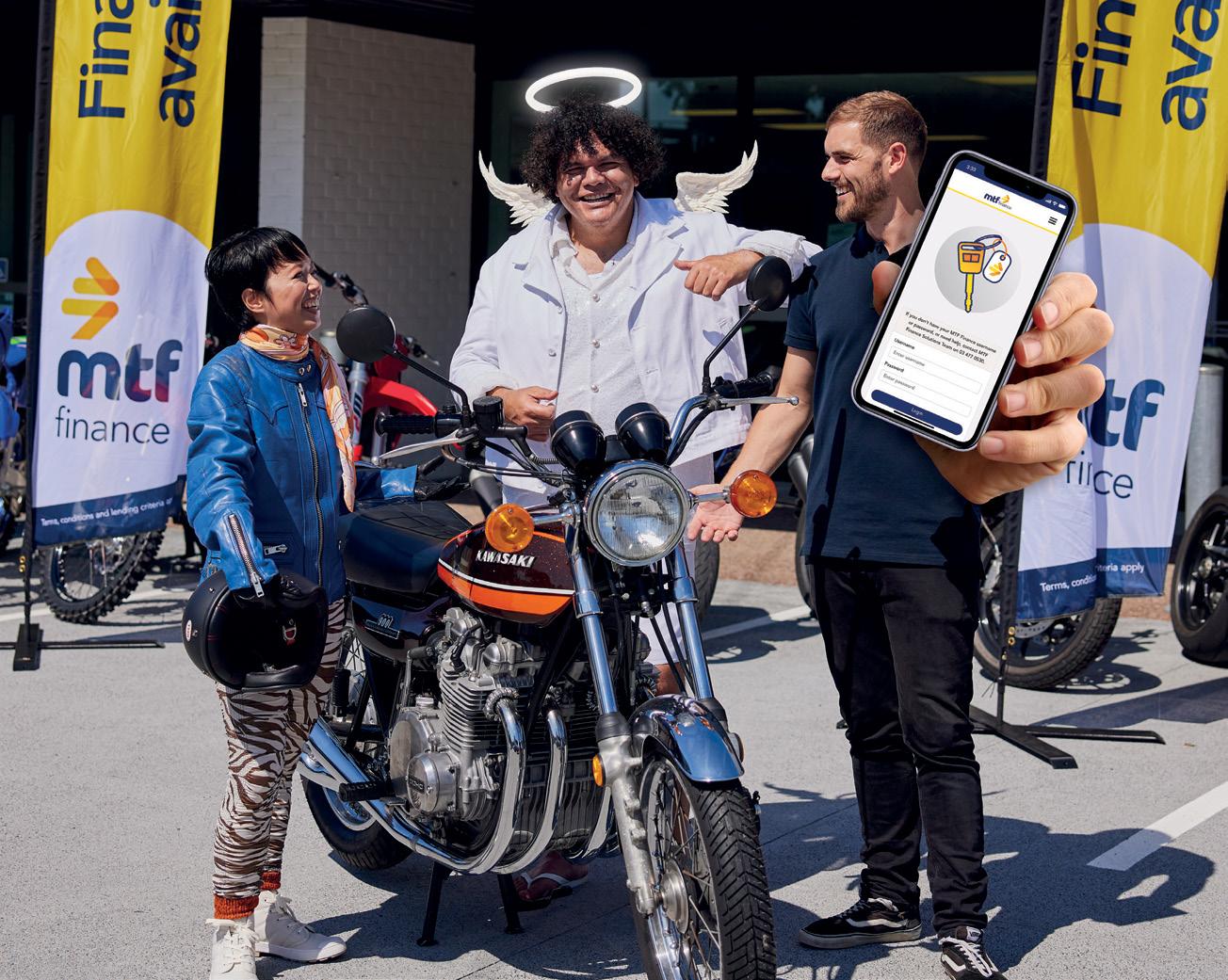

www.autofile.co.nz 15 “An app that makes your life easier? That’s a wing-wing situation.” Introducing the all-new MTF Finance Dealer App Our brand new app is the first of its kind in New Zealand. It means there’s no need to wait on finance reps or have awkward conversations with your customers to get them finance. We’ll sort the loan for you, with your commission paid on the spot. Talk about easy. Find out more at mtf.co.nz/join Helping New Zealanders do more since 1970 Offer of finance is subject to terms, conditions and lending criteria. See mtf.co.nz/terms for details.
Industry movers
DAVID O’CONNELL has retired as managing director of Geneva Finance to pursue personal business interests and spend more time with his family. He had been at the helm since the company was in a moratorium in 2008.
“Geneva is in a good place with a strong executive team,” says O’Connell, pictured. “I have every confidence the team will further enhance shareholder returns and value.”
His previous roles include managing director of Redpaths NZ from March 2002 to October 2005 and finance director of The Farmers Trading Company for nearly six years from October 1987.

Malcolm Johnston, who has been on the board since February 2020, has taken over as interim managing director. He has 30-plus years of experience in commercial banking, finance, general insurance and manufacturing, and has been general manager of the Pacific region for the Federal Pacific Group since mid-2014.

JASON JARVIS has become national sales manager of Skoda NZ at European Motor Distributors (EMD) after being dealer development manager at Volkswagen NZ for two years.

Before that, he was the managing director of JMIS Training, his own Auckland-based company.

Jarvis, who has more than 30 years’ industry experience, has also worked for the likes of Isuzu Utes NZ, Continental Cars BMW, Continental Cars, and City and West Auckland Nissan.
CHANELLE McDONALD has started as general manager of passenger cars at Volkswagen NZ.
Her role at EMD, part of the Giltrap Group, comes after being national sales and corporate manager for Skoda NZ since November 2020.

Before that, she was head of marketing at Audi NZ from July 2018 after joining EMD from FCB NZ, an advertising, marketing and communications agency.
McDonald replaces Greg Leet at Volkswagen with him becoming general manager at Audi NZ.

CRAIG CLARKE has been appointed chief executive officer of Tasman Toyota after working at the Taranakibased business for more than 18 years.
Clarke, pictured, replaces James Crighton as the franchise looks at its future growth in the area, with dealerships currently operating in New Plymouth, Westown and Hawera.
His early career saw him work as director or sales manager of car and rental companies before joining Tasman Toyota in May 2005 as sales manager. In 2022, he became general manager. Crighton remains a shareholder and director in the business.
MARC EBOLO has become director of sales for General Motors Middle East in Dubai. Before that he was managing director of GM Australia and New Zealand for three years.
Ebolo was previously MD of Holden NZ for twoand-a-half years until November 2020.
Shareholders back deal for company
David Sena has been given the green light by shareholders of 2 Cheap Cars Group Ltd to complete the purchase of Eugene Williams’ stake in the business.
The $4.3 million agreement between the two co-founders was put to a vote at the company’s annual shareholders’ meeting in Auckland on September 28.
With Sena and Williams unable to vote on the proposed transaction, it left the decision in the hands of those holding less than one-quarter of the shares in 2 Cheap Cars.
A resolution to approve the deal was passed after more than 5.5 million votes, or 93.6 per cent, cast in person or by a proxy holder were in favour of Sena and his family trust buying Williams’ shares. The number against was 376,771, or 6.4 per cent.
Chairman Michael Stiassny told shareholders after voting had taken place that Sena should now be “very happy” and the turnaround in 2 Cheap Cars’ fortunes “has not been without difficulty”.
He added the breakdown in the relationship between Sena and Williams had been “acrimonious, distracting for the business from a governance and operational viewpoint, and detrimental for shareholder value”.
Stiassny said the deal for Sena and related parties to acquire the stake held by Williams and his interests of about 30 per cent was a “significant milestone and draws a clear line underneath the tensions of the past few years. The board and management look forward to focusing on growing the company, and the continued restoration of shareholder value”.
He noted the transaction was viewed by the independent
directors as in the best interests of all shareholders because it will allow the company to move forward without further distraction.
“We were pleased to see our view supported by the NZ Shareholders’ Association [NZSA] following David’s discussions with them aimed at protecting the interests of minority shareholders," he said.
“David has made a public statement of his intention not to utilise the ‘creep’ provisions of the Takeovers Code for a period of three years from the date of the share acquisition.
“He also intends to maintain a majority of independent directors on the board, and enable consultation with minority shareholders and their representatives prior to the appointment of future independent directors.”
These statements of intent and their legal effect were released to the NZX on September 13.
“I understand that in working with David on these commitments, the NZSA has accomplished a first for an NZXlisted company,” said Stiassny.
Stiassny told shareholders that Sena was passionate about the business. “He is a car man through and through, and has been instrumental in getting 2 Cheap Cars back on-track by working hard to improve its operational performance and share price.
“He has an undeniable vested interest in the business achieving sustainable profitability, which benefits all shareholders.”
Stiassny acknowledged and thanked chief executive Paul Millward for his efforts since joining 2 Cheap Cars in January. “He hit the ground running. The year-to-date results are testament to his energy and focus.”
16 www.autofile.co.nz
news
David Sena
TO FEATURE IN INDUSTRY MOVERS EMAIL EDITOR@AUTOFILE.CO.NZ
Sorting out digital foundations
As we’ve explored in previous columns, today’s automotive market requires dealers to be running continuous digital advertising campaigns to ensure they reach customers at every stage of the buying journey.
However, what’s the point of investing in advertising if your marketing foundations aren’t in place?
You wouldn’t spend large sums of money promoting your dealership only to disappoint visiting customers with degraded showroom facilities, low stock levels and unprofessional staff.
Dealers appreciate that the appearance of their premises and their team’s presentation are key to converting customers, so it’s important to invest in these accordingly.
Similarly, investment needs to be made in certain long-term marketing foundations to ensure you’re always putting your best foot forward in the digital landscape. And that’s namely your website and basic digital marketing.
YOUR DIGITAL FACE
Ninety-two per cent of New Zealand customers will visit
your website before engaging with your business. It’s the digital face of your dealership so aesthetics are paramount to keep them engaged.
Website creative is a speciality that only highly qualified designers truly get right and, within that, automotive sites have a sub-set of design elements that are unique to the industry. These include the way that the site navigates through new-car content and the layout of the stock locator.
Priority must be given to offers pages, scrolling banners and multiple conversion points, such as live chat, enquiry forms and click-to-call buttons. Furthermore, your website should be unique to your dealership – not just a templated version of other sites of the same franchise.

through content that’s unique to your dealership.
Mobile responsiveness and load speed are also key in ensuring a good user experience.
Only a reputable website developer can implement the necessary strategies to achieve these.
Customers today expect to be able to clearly view websites on their phones and don’t want to have to wait long for pages to load. If their experience on your site isn’t optimal, they will move across to a competitor’s site.
you have your marketing bases covered?
Load speed also has an impact on searchengine optimisation (SEO) with rankings of sites being downgraded if they take too long to load.
showroom, they will act as free advertising for your business.
COVER YOUR BASES
While it’s easy to get distracted by the metaverse, non-fungible tokens and AI, the reality of digital marketing is that the foundations are still what will drive results for most businesses.
Trusted staples such as your website, SEO, email, social-media, community and reputation management, and digital advertising will continue to bring in the bulk of your leads.
For this reason, while encouraging you to be open to new ad types and techniques as they hit the market, and to regularly re-evaluate your strategy, we also recommend staying true to what you know is working for your business.
Ask yourself today, have you covered off the basics?
Website – up to date.
Google Ads.
When visiting a website, customers want to feel as though you are speaking to them, with an understanding of who they are and what they want. This is done

Just like a renovation to your premises, when building a new website you should hire a qualified, reputable team that will deliver a site that functions well and is visually appealing. Once these foundations are in place, like your
Social-media campaigns.
Live inventory advertising.
Direct marketing.
If you’re running a fully functioning and modern-day dealership, you should be able to answer “yes” to all the above.
www.autofile.co.nz 17 LEAD GENERATOR TOOL DRIVE BETTER ENQUIRIES WITH A POWERED BY ACCURATE, INDUSTRY-TESTED DATA (09) 887 1822 info@adtorqueedge.com adtorqueedge.co.nz ADTORQUE EDGE ADTORQUE EDGE
TODD FULLER General manager, New Zealand AdTorque Edge
Do
Car weight key to user charges
There has been some chatter recently about the future of road-user charges (RUC).
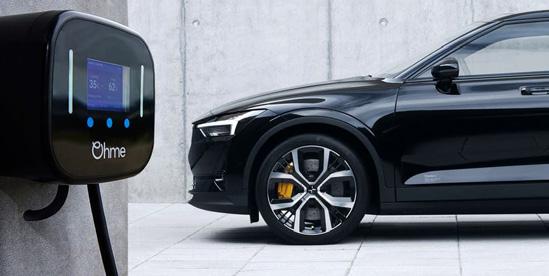
At the moment, we know the exemption for owners of electric vehicles (EVs) ends early next year.
Also, I’ve had discussions with industry and government officials about the feasibility of applying RUC to all light vehicles. Personally, I think this is a good idea.
While there’s the argument for electric-car owners having to pay their fair share for using our roads, I worry that this policy will be seen as an attack on EVs and have a negative impact on their adoption.
I understand this isn’t the case, but often the diminishing of privileges can be perceived as unfair to those who are used to receiving them.
A universal application of RUC will nullify any perception that EV owners are being singled out. I do, however, think it’s very important that the policy also be implemented in a fair manner.
The RUC policy documentation that’s available already states this is a goal of the system. It explicitly argues that road-user charges should only be priced to recover the costs of maintaining our roads and should be targeted directly proportional to the amount of damage any given vehicle does.
Unfortunately, the proposal for universal implementation next year doesn’t seem to do this. Charging a flat $75 per 1,000km for all light vehicles fails to target costs proportional to damage done.
There are two primary considerations when determining the damage a vehicle does to
roads. These are weight per axle, which is really a proxy for weight at any given point of contact, and speed travelled.
The impact of weight is by far the greatest determiner because it’s exponential to a power of four. This means a vehicle that’s twice as heavy as another does 16 times as much damage.
Speed, on the other hand, is linear with faster being more harmful, but only directly proportional to how much faster.
In addition, we can assume that all vehicles on the road are travelling at similar speeds, so the harm from speed is evenly distributed. Because of this, I’ve ignored the impacts of speed in my argument.
be collected from the light fleet – assuming 14,000km per vehicle each year and $75 per vehicle per 1,000km –and refactored costs relative to the spread of relative damage. The result was very different to what is being discussed.

For instance, a 1,450kg car, if the owner were to only have to pay his or her share, would only be liable for RUC of $14 per 1,000km, whereas a three-tonne vehicle would be responsible for $260 of damage to the road per 1,000km.
This suggests that heavy vehicles are being subsidised by lighter vehicles, counter to the government’s stated design purpose of the RUC system.
In addition, my model only
it looks like the light fleet is currently subsidising the former.
As I mentioned earlier, my methodology also allowed me to calculate the relative damage and the “fair” share of cyclists.
A two-wheel vehicle with a gross vehicle mass (GVM) of 150kg that travelled 2,000km annually would have a fair RUC charge of $0.009 and a 300kg GVM twowheel cycle that travelled 2,000km per year would have an annual “fair share” of some $0.731.
Of course, this is being applied to the percentage of RUC for recovering the costs of road damage.
It doesn’t consider the costs of dedicated cycleways. Since most of New Zealand has no cycleways, I think it’s safe to say that – at this point when most cyclists are sharing roads with cars – a cyclist’s “fair share” is negligible.
We should move to universal RUC and it should be based fairly on the damage a vehicle does to the road.
I’ve done some basic modelling by looking at the variation on vehicle mass in the fleet. I calculated the relative damage a vehicle does based on its mass spread across the number of points of contact with the road. This allowed me to consider motorcycles and tricycles as well.
I then took the sum that would
looked at the light fleet. Since the “fair” costs for heavier light vehicles exceed the costs we charge for heavy freight, it seems highly likely that light vehicles will be subsidising commercials and heavy freight under the proposed model.
In fact, since we aren’t looking to raise the costs for heavy vehicles,
I’ve always been a supporter of forcing the price of goods of services to include the cost of externalities. It’s the best way to progressively drive down the negative consequences of our lifestyles without requiring radical disruptive shifts.
If, for instance, the fossilfuel industry had to pay for its externalities, it’s estimated that it would have been 40 per cent less profitable. This would have had many impacts including driving innovation in other less harmful technologies, such as EVs, much earlier.
18 www.autofile.co.nz tech report
KIT WILKERSON
Head of policy and strategy kit@via.org.nz
Advise • Advocate • Connect www.via.org.nz Imported Motor Vehicle Industry Association Advocate Advise Connect
Electric cars are exempt from RUC until March 31, 2024
Start your success story
Scholarship applications now open!
Multiple scholarships available across 15 categories
Ready to start your success story?
If you work in the automotive industry, you could be eligible to apply for a 2024 scholarship.

Find out more at mito.nz/scholarships

Cole, 2023 scholar
The month that was... October
October 6, 2006
Commission rejects complaint
The Commerce Commission said that a complaint against a company wouldn’t be pursued after the regulator found no breach of the Fair Trading Act (FTA).
In June, Autofile reported three inspection companies had signed a code of practice for minimum standards. Central to these were the physical and forensic removal and examination of the cluster and odometer.


They later laid a misrepresentation complaint with the regulator after objecting to the “odometer passed” sticker that another company placed on all cars checked and passed in Japan. They claimed the sticker falsely represented a physical check of the odometer.
“The final decision was that, with the information provided, the commission wasn’t convinced there was any clear breach of the FTA,” said Dean Winter, manager of the commission’s branch for that legislation.
“If the facts did establish a clear breach, it’s considered that the circumstances would be more appropriate for a private action to be taken as is available under the act.”
October 24, 2008
Calls for more road safety
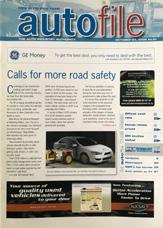
Continuing with Autofile’s pre-election build-up and what it might hold for the motoring industry, the magazine heard from the NZ Automobile Association.

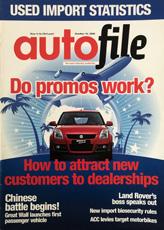
It was urging all political parties to commit to road safety and, in doing so, potentially save thousands of people from death or injuries.
Mike Noon, general manager of motoring affairs, said: “So far in this election campaign, any transport discussion has very much focused on infrastructure. Regrettably, little attention has been given to improving safety.
“More than $100 million is collected by police from traffic infringements every year. That is $100m which should be spent on roadsafety engineering and education.”
In 2007, 422 people died, 2,654 were seriously injured and 13,359 were injured on our roads. In total, 16,435 people – the equivalent of everyone living in the town of Cambridge in the Waikato – were injured or killed.
The total cost of all motor-vehicle crashes in New Zealand during 2007 came in at an estimated $4.5 billion.
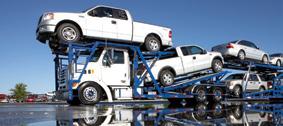
A survey in March 2005 showed 91 per cent of AA members wanted revenue from speed cameras spent on road safety rather than be used as general expenditure.
October 29, 1996
Turning up heat: Boswell buys Hammers
In a move that had seen two auction house chief executive officers swap chairs, former Turners Auctions’ chief John Boswell bought rival Auckland company Hammer Auctions.
Boswell left Turners in July after 22 years in charge and his replacement was Jeff Wesley, who had been the manager at Hammer.
The move by Boswell to buy Hammer from Tony Radisich would see competition between the auction houses step up a notch. The former had earlier tried to mount a bid to buy out Turners Auctions from the T&G Group.
While Wesley was at Hammer and Boswell was at Turners, each had begun campaigns aimed at attracting dealer business – Hammer upgraded its Penrose facilities and Turners introduced a new customer retention scheme. After the roles were swapped, Wesley and Boswell would see their former company’s systems and marketing plans used in direct competition.
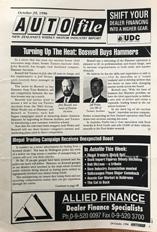
Boswell said a refocusing of the Hammer operation was planned to lift its brand image, and increase responsiveness to both trade and market demands.
In the third leg of the auction “battle”, Australian company Fowles was launching its New Zealand operation – starting with Ford dealeronly auctions that week.
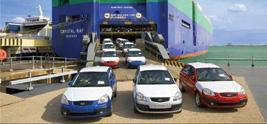

October 16, 2009
Do promos work?
For Suzuki NZ, it was a campaign to literally get buyers stuck on their cars with a competition run with TV3’s Sunrise.
From October 5, 100 competitors in five locations across the country had to keep the palms of their hands on different models for 72 hours.
The competition attracted a huge increase in viewers for the morning show, but for Suzuki it was an opportunity to push brand recognition.
Gary Collins, manager of national vehicle sales, said: “We thought it was a good chance to get coverage across the country. We also wanted to push that we had new dealerships, such as Moyes, and that the public become aware of our product and dealers.”
The promotion saw a huge influx of people visiting dealers – not only the 20 competitors at each branch, but their supporters, TV3 crews and the public.
20 www.autofile.co.nz looking back Don’t go searching for news. Let the news come to you. Subscribe now to for twice-weekly updates www.autofile.co.nz/subscribe INSIGHT
Testing times for vehicle dealers

What a crazy year we’re experiencing when you combine an election with changes to the clean car discount and standard before adding in a cost-of-living crisis.
There have also been ramraids, the lack of summer and unprecedented storms in some regions.
Highs and lows so far in 2023 have been felt across the new, used, commercial and motorcycle sectors with overall sales still tracking behind last year, and theft cases not being solved.

And as purse strings tighten, we’ve had more issues coming through our mediation team.
It’s seeing more detailed complaints being lodged that are good at highlighting areas of the Consumer Guarantees Act (CGA) that applicants think are relevant to their cases.
It appears some people are looking for ways to get out of what could now be unaffordable purchases or payment plans.
Given the current economic situation and as its financial impact continues to place households under more strain, we could see more people defaulting on loan payments or looking to get out of repayment contracts. This pressure will be reflected in more customers being difficult and even more demanding.
Our team has seen an increase in people looking for compensation for a range of matters, such as faults postpurchase, perceived misrepresented vehicles, faulty coil packs, water leaks, rattles and engine failures. There has even been a complaint about being unable to tow a trailer.
Some of the interesting or more unusual cases the MTA’s mediation team has dealt with recently bring home challenges faced by the industry.
For example, a client purchased a second-hand 2019 car from dealer A in 2020 and it recently blew an AC hose. Due to its new location, it was taken to dealer B who, in agreement with dealer A, rectified the blown hose.
Since then, the owner complained of a whine in its AC compressor pump and believed the manufacturer and or dealer B should replace it at no cost even though the vehicle had now done an extra 40,000km, was more than three years old and outside the manufacturer’s warranty.
The hose was replaced under goodwill by the manufacturer after the customer jumped up and down.
The compressor noise wasn’t a fault and was a characteristic of
the compressor. Dealer B offered to show the buyer a couple of similar vehicles to hear them all making that noise, but the customer didn’t want to know. He’s still pushing for a free replacement of the compressor.
In another case, a highly modified vehicle that recently had a major motor failure was purchased more than three years ago and had travelled more than 50,000km before the owner tried to claim against the trader. Common logic prevailed and the application didn’t progress.
Then there was an imported 1998 vehicle that unbeknown to the dealer at the time of sale had a damaged entry flag. That flag should have been removed – it had been tagged at the border for inspection, but passed without needing remedial work.
The car ended up being sold by the trader seven years and 75,000km later. The flag had been picked up when the owners tried to sell it. This was when they wanted the dealer to buy back the vehicle for the original purchase price or close to it.
In addition, it didn’t have a warrant of fitness and needed $2,000 of work to get it up to standard.
Some complaints do have merit, but some don’t. Between June and August 2023, more than 200 cases involving dealers came to our mediation team. Less than six per cent of those cases involving MTA members ended up at the Motor Vehicles Disputes Tribunal (MVDT).
A member in this space recently passed on his feedback saying the MTA team has been instrumental in assisting them to resolve issues before they get to the tribunal.
With more and more customers heading down the tribunal pathway, dealing with complaints has become critical and you may have seen a doubling of such matters now compared to 10 years ago.
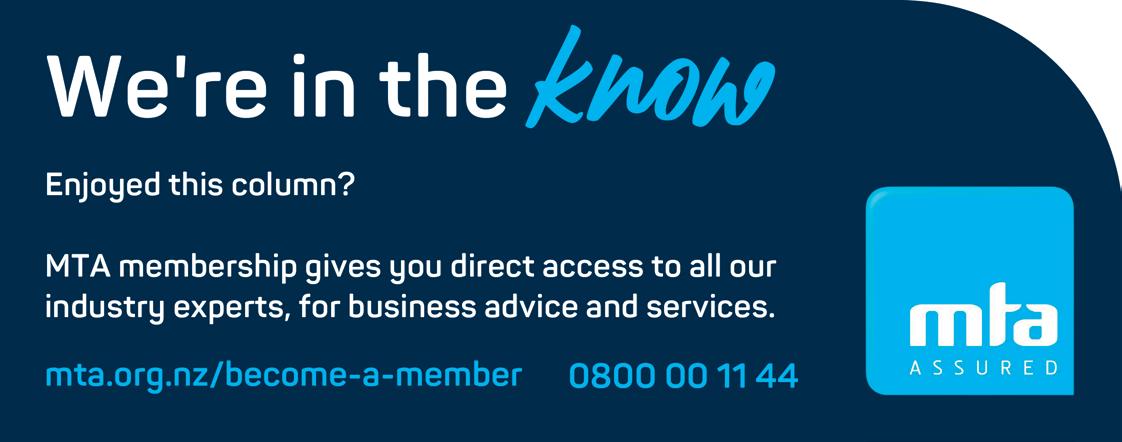
Over the past decade, cases going to the MVDT have doubled from 249 in 2013 to 582 in 2022.
The MTA’s manifesto – Driving New Zealand Forward: Future Proofing the Automotive Industry – was launched at parliament on May 9. In this document, we made a call for the next government to consider amending the CGA to give courts and tribunals discretion to allow for vehicle depreciation and use in some cases.
It has been several years since this act’s provisions for vehicles were last amended. A rethink is needed on how they might best apply moving forward. For more information on the manifesto, visit the MTA’s website.
www.autofile.co.nz 21
LARRY FALLOWFIELD
Sector manager – dealers, Motor Trade Association
Ute gets ‘completely reimagined’

Mitsubishi Motors has launched its all-new Triton overseas with it slated to arrive in New Zealand early next year.
The sixth-generation one-tonner boasts a beefed-up body size and new engine with higher output.
It went on sale in Thailand following its big reveal in Bangkok at the end of July and will be available in Japan in 2024 for the first time in 12 years.
About 5.6 million Tritons have been sold in some 150 countries since it first came onto the market in 1978, so it’s a globally strategic model for the company.
For its sixth iteration, all its elements have been “completely reimagined”. The front end has a “strong sense of presence and reliability”. Then there’s wide and robust styling, an interior offering functionality, and improved safety and comfort.
It will come in three body types – double cab, basic single and club cab with cargo space behind the front seats.

The ladder frame has a 65 per cent greater cross-sectional area than the previous model. It achieves a bending rigidity increase of 40 per cent and 60 per cent more torsional rigidity.
The engine comes in three different outputs. The high-output version has a new turbocharger
and combustion system for maximum output of 150kW and maximum torque of 470Nm from around 1,500rpm.
There are two versions of the standard specification – one with an engine with 135kW and 430Nm, the other with 110kW and 330Nm. Both have a variable geometry turbocharger that performs variable control of turbine capacity.

The engine is mated with a sixspeed automatic transmission with sports mode or a six-speed manual with shift-by-wire that reduces vibration.
The new model continues to use the Super Select 4WD-II and Easy Select 4WD systems.

Super Select is equipped with a centre torque-sensing limited slip differential that distributes driving force at a ratio of 40 per cent to the front. It’s 60 per cent to the rear for

traction and cornering performance.
Models with Super Select have four options – rear-wheel drive (2H), full-time four-wheel drive (4H), 4HLc with locked centre differential and 4LLc with locked centre differential with lower gears.

They have seven drive modes, including on-road, for an increase of four off-road modes over the outgoing model.


Along with normal, which is available in all 4WD modes, 2H offers eco mode, 4H has gravel and snow, 4HLc offers mud and sand, and 4LLc provides rock mode.
The 4WD modes available for selection in vehicles equipped with Easy Select 4WD are the 2H, 4H and 4L for use in low gears.
Active yaw control has been adopted for models with Super Select, which applies light braking to the inside front wheel when cornering.
Active stability and traction control come as standard across the range. Other systems include hilldescent control and hill-start assist.
The Triton’s front suspension retains a double-wishbone
structure. The upper-mounting arm has been moved higher to increase the stroke by 20mm for improved holding and comfort.
The rear suspension has greater ride comfort while retaining its strength and uses a lighter leafspring system and thicker shock absorbers.
For the high-output engine model, electric power steering has been included for better control and more assistance in the lowspeed range.
Functional design has been incorporated to increase utility, including a cabin shape and rear spoiler that improve aerodynamics, more durable door handles that are bigger and easier to grip, and wider running boards.

The instrument panel is designed with the “horizontal axis” concept, which uses strong shapes to allow motorists to easily see changes in the vehicle’s on-road posture. Soft pads have been incorporated in the main areas to protect passengers.
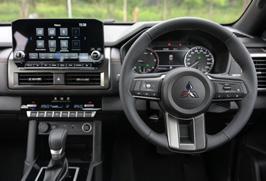
The cargo bed’s height has been lowered by 45mm to 820mm, and the upper surface area of the bumper corner has been enlarged and reinforced with a frame to be used as a foot space.
Pre-orders for the all-new Triton should be opening in New Zealand in late 2023.

22 www.autofile.co.nz
To advertise here, contact: advertising@autofile.co.nz or ph 021 455 775 VEHICLES WANTED DEALERS BUYING NOW Automotive excellence since 1993. Your o cial Audi, Porsche, Jaguar, Land Rover and Volvo dealer Wellington 66 Cambridge Terrace, Te Aro, Wellington | 04 887 1306
new cars
The all-new Triton is slated to arrive on our shores in early 2024
Plug-in for super-car racing
Ferrari’s SF90 XX Stradale has coined its name from dual personalities – Stradale for street, while the two letters are a nod to engineering too extreme for the road.
The origins’ contradiction begin with the marque’s marketing and commercial boss Enrico Galliera, who became convinced the SF90 needed a more powerful variant worthy of XX badging. His brief was for a racing car, but one that is road legal.
For roughly twice the asking price of an SF90 Stradale, the XX delivers 22.4kW more power and a 10kg weight saving.
It retails from the equivalent of NZ$1.4 million with the SF90 XX Spider from $1.5m. The original SF90 starts from $762,000.
The XX offers acceleration of 0-100kph in a time of 2.3 seconds and a top speed of 320kph.

It and its spider sibling are limited to production runs of 799 and 599 respectively of V8powered plug-in hybrids (PHEVs).
The Stradale XX’s specificsoftware logics and new aerodynamics – including a fixed rear spoiler, the first to appear on a road-going Ferrari since the F50 – deliver 530kg of downforce at 250kph.
The same concept has provided the inspiration for the SF90 XX Spider, which benefits from the same aero solutions as the Stradale,
Hilux goes hybrid
Toyota is set to offer mild hybrid technology on selected Hilux models next year.
It says the all-new variant will deliver about a 10 per cent improvement in fuel economy on what’s offered by its 2.8-litre turbodiesel engine.

Working with the 1GD-FTV series four-cylinder diesel engine and AC60F six-speed automatic transmission, the 48-volt motorgenerator and battery pack will have idle-stop functionality, improved driveability and reduced noise vibration.
Detailed specifications, such as power, torque, economy and

carbon dioxide (CO2) emissions, have yet to be provided.
The current turbo-diesel Hilux four-wheel drive (4WD) double cab delivers 150kW of power at 3,400rpm, 500Nm of torque between 1,600 and 2,800rpm, consumes 8.4 litres per 100km and emits 220gCO2/km.

This means a 10 per cent improvement in fuel consumption could see the average fall to around 7.6l/100km.
Toyota says its hybrid technology will have no impact on the ute’s towing ability with 4WD models maintaining 3,500kg braked capacity. It expects the first hybrids to be available in 2024’s first quarter.
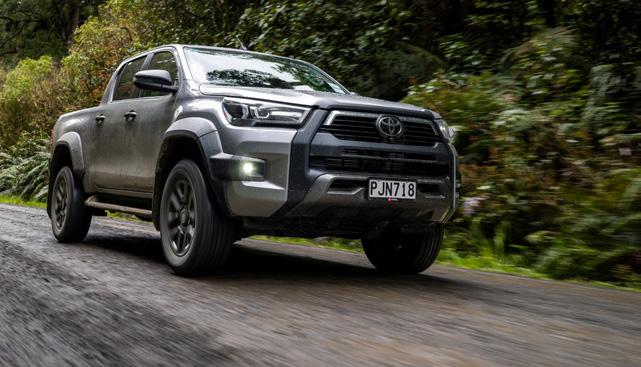
as well as specifically developed cockpit air flows for occupant comfort with the top down.
The marque’s retractable hard top, which comprises aluminium panels, comes down in 14 seconds and can be activated at up to 45kph.
The XX Stradale has also inherited the signature PHEV layout from the SF90 Stradale and Spider, in which the internal-combustion engine (ICE) is integrated with three electric motors.
Two are independent on the front axle, and one is located
between the engine and gearbox at the rear.
Efficiency has been boosted by polishing the inlet and exhaust ducts, while the compression ratio increased by adopting new pistons and specific machining of the combustion chamber.
The XX Stradale’s high performance lithium-ion battery powers the three motors for a 25km range in full-electric mode. When the ICE is off, the front motors provide a top speed of 135kph.
The driver can use the steeringwheel selector to choose from four different power management modes.
These include eDrive when the ICE is off and hybrid mode, which maximises the full-electric range. Performance mode is when the ICE is running and the system unleashes maximum power output when in qualifying mode.
www.autofile.co.nz 23
Contact Paul Curin P. 0274 333 303 | E. pcurin@milesgroup.co.nz commercial vehicles NZ N ew cars, SUVs and Looking to buy late model VEHICLES WANTED
new cars
The SF90 XX Stradale
Green future for premier series
As it closes in on its 20th anniversary, New Zealand’s premier one marque, single-seater series continues to maintain its relevance as an off-season championship for rising race stars.
The Toyota Racing Series (TRS), now known by its lessthan-catchy new name – the Castrol Toyota Formula Regional Oceania Championship – has been polishing the craft of Kiwi drivers since 2005.
Its first race winner, Brendon Hartley, went all the way to Formula 1 and is now a mainstay of the Toyota Gazoo World Endurance Championship team.
Beyond Hartley’s stellar career, more than a dozen “graduates” of the championship have reached F1.
They include Russian Daniil Kvyat and 23-year-old British driver Lando Norris, who won TRS in 2016 and has been driving for the McLaren in F1 since 2019. He was a test driver for the team two years before getting the drive.
Defending Repco V8 Supercars champion Shane van Gisbergen has already shaken the NASCAR world this year with his one-off
entry and debut victory in the US.
He too is a TRS graduate having finished second overall in 2007 when driving for the International Motorsport team.
In fact, it’s easier to list the Kiwi drivers winning internationally who haven’t risen through TRS – Scott Dixon and Scott McLaughlin.
The championship attracts drivers from Europe, the UK, US, Asia and a number of South American countries. That means team managers, talent spotters and driver managers are all watching New Zealand closely every January.
Beyond the razzle-dazzle of all the racing stars, the series has always worked hard to stay relevant.
Offering international drivers an intense off-season with a 15-race series and up to 3,000km of testing and racing, the series switched to E85 fuel after just two seasons. It was the first New Zealand race category and one of the first in the world to do so.

E85 fuel is blended to consistently contain 85 per cent ethanol, meaning just 15 per cent is still fossil fuel. This significantly reduces greenhouse gas emissions
with no reduction in performance.
Toyota adopted it for the TRS before ethanol fuels beyond a 10 per cent blend were commercially available in New Zealand.
The 2ZZ-GE engines used in the FT-40 and FT-50 TRS cars consistently produced some 160kW, or 215bhp, on E85 with absolute reliability.
Last season’s only engine failures were experienced at Taupo when a “bomb hole” dip in a fast corner caused engine lubricant starvation and subsequent bearing damage.
Using E85 has significantly reduced the series’ carbon footprint when such steps were hardly spoken of in international categories. The A1GP, the Australian V8 Supercars and IndyCars all made the transition later.
Running in the northern hemisphere’s winter, the TRS has offered competitors a unique opportunity to race while their domestic championships are snowed in or under off-season testing bans.
Spencer Piggot, an American driver coach and former IndyCar racer, has high praise for the series.
“What I particularly like about it – apart from the obvious things, such as the quality of the racing and the mileage these young drivers get – is the challenge of the individual tracks that are on the calendar,” he says.
“The New Zealand circuits are interesting, contrasting and challenging. That’s certainly very good for driver development if I look at it from that perspective.
“And I think that’s one of the reasons why you see so many great Kiwis around the world racing. They’ve cut their teeth on these tracks.
“If you can go well on that selection of unforgiving and challenging circuits, where there are actual consequences if you go off where there aren’t vast areas of run-off, I reckon you can go well almost anywhere. That’s a big plus for me and a key reason why Jacob Abel competed in the championship.”
Abel currently competes in Indy NXT for Abel Motorsports, and previously competed in the Indy Pro 2000 Championship with the same team.
The series has been included in
24 www.autofile.co.nz 09 966 1779 www.jevic.com S P E C I A L I S T S I N PRE‑SHIPMENT INSPECTIONS MPI biosecurity inspections Biosecurity decontamination Heat treatment Odometer verifications Pre-export appraisals NZTA border inspections ? Lost documentation reports
motorsport
A sustainable future lies ahead for the Castrol Toyota Formula Regional Oceania Championship.
Photo: Bruce Jenkins
the New Zealand Grand Prix since 2005. The NZGP is one of only two such events outside F1 that are allowed by the sport’s governing body to use the “grand prix” title.
The current FT-60 cars use Toyota-Lexus four-cylinder turbocharged engines prepared in-house by Auckland-based guru David Gouk. They, like the FT-50 and original FT-40, are based on a Tatuus chassis and Sadev six-speed transaxle gearbox.
The previous vehicles have become top contenders in Formula Open NZ where they come up against equivalent cars from various Renault series.
Key to attracting international drivers has been the ability of the Toyota-backed series to offer “superpoints”, which can be accumulated to get a start in F1.
GOING CARBON NEUTRAL
Now, Toyota Gazoo Racing NZ (TGRNZ) is evaluating a carbonneutral fuel (CNF) in its Castrol Toyota Formula Regional Oceania Championship engines.
It has been engine dyno-testing P1 on the two-litre turbocharged unit used in Toyota’s FT-60s for its single-seater series.
The testing programme has confirmed there is no loss in power or performance, no reliability issues and no significant changes required in engine mapping.
As a result, the marque’s motorsport operation has confirmed it will now integrate the CNF into its on-track testing programme for 2023.
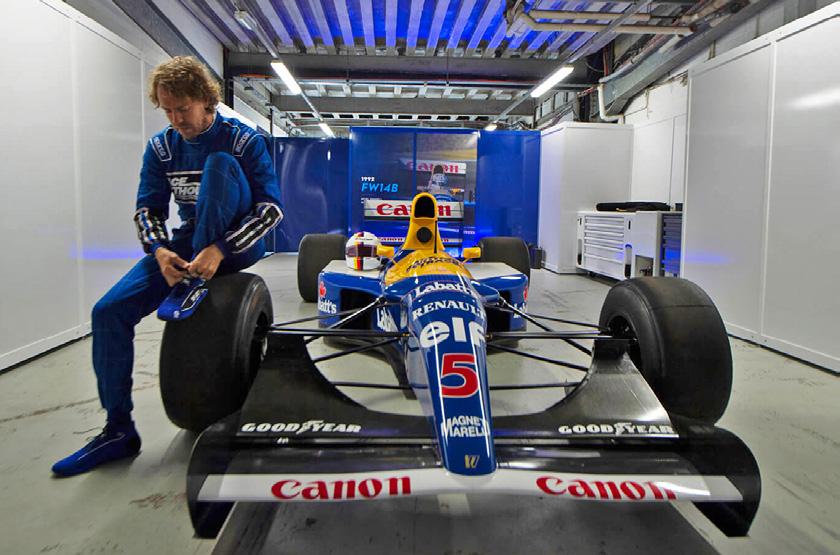
If successful, it could be
adopted as the official fuel for the championship as early as 2024 or 2025. That would make the Kiwi championship the first FIA Formula Regional series to genuinely use a 100 per cent sustainable fuel.
TGRNZ would then look to introduce it to its Toyota 86 Championship in this country as soon as possible after that and is already eyeing up potential partners for the project.
The series organisers have confirmed dates and circuits for this year’s Castrol Toyota Formula Regional Oceania Championship.
The early release follows the completion of the championship’s first full international season post-Covid and its debut as an official FIA Formula Regional Championship.
For 2024, the series breaks with its approach of recent years by starting in New Zealand’s North Island at the Taupo International Motorsport Park over the weekend of January 19-21.
From there it will move to Manfeild – Circuit Chris Amon the following weekend for the second round before visiting Hampton Downs for round three from February 2-4 using the long international circuit layout.
The series then heads south to Christchurch and the penultimate weekend at the Euromarque Motorsport Park from February 9-11.
The championship concludes from February 16-18 with the 68th NZGP, which will be held for the first time at the technical, highly challenging and picturesque
4.1km Highlands Motorsport Park located in Cromwell. It will also be the first time the grand prix has been held in the South Island since 2007.
EXCLUSIVE SUPPLIER
New technology fuels are being trialled throughout the motorsport world. In addition to the successful adoption of E85, other categories are using synthetic fuels of various types.
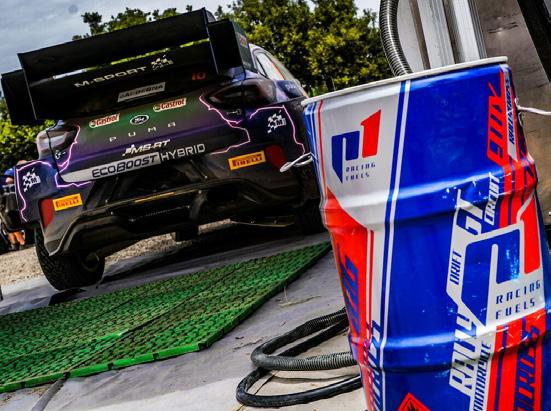
P1 is a global leader in CNFs and has a growing presence in motorsport. It’s the exclusive supplier for the World Rally Championship, powers the FIA Karting Championship and across the world has partnerships with many other manufacturers apart from Toyota.
Carbon-neutral fuels, such as P1, are part of a large family of partly or fully fossil-free synthetic fuels.
They are blended from chemical components derived from either second-generation feedstock, such as bio-alcohols generated
from agricultural and urban-waste biomass, or from the industrial catalytic conversion of syngas, which are generally known as e-fuels or power to liquid.
In both cases, every part of the blend is of non-fossil origin, so no new carbon dioxide (CO2) is emitted during its use. This is because carbon atoms in the fuels are captured from CO2 already present in the atmosphere.
The carbon-capturing process can be achieved naturally through the photosynthesis of plants or algae, or artificially through processes such as direct air capture when CO2 is taken directly from the atmosphere.
The P1 fuel shot to prominence when it was chosen by three-time F1 world champion Sebastian Vettel in his collection of historic F1 cars and it was publicly supported by him as a sustainable solution for the 1.6 billion internal combustion engines used in cars globally.
Nicolas Caillol, TGRNZ’s motorsport manager, says the dyno tests using P1 have been “extremely productive”.
He adds: “Our goal, like our parent company Toyota NZ, is to reduce our greenhouse gas emissions by a minimum of 46 per cent by 2030.
“We will do this through carbon neutrality with both of our New Zealand racing championships and set new standards for sustainability in motorsport in this country.
“We believe that is a fantastic way forward for the sport here and in other official FIA Formula Regional series.”
www.autofile.co.nz 25
t motorsport
Sebastian Vettel paid $5.7 million for the 1992 title-winning FW14B car, which was led to victory that year by Nigel Mansell. The car now runs on P1 carbon-neutral fuel
Carbon-neutral fuel is used in the World Rally Championship
‘New car’ expectations push buyer to reject used import due to problems with controls

Background

Xin Li wanted to reject the 2022 Honda Vezel she purchased for $47,680 from Sunday Ltd on February 26, 2022. She claimed steering-wheel controls and its Apple CarPlay didn’t work.

She claimed she gave the dealer a reasonable opportunity to fix the issue, but it had failed to do so. She wanted a refund of the purchase price.
Sunday Ltd disagreed because the Apple function wasn’t faulty. It agreed some buttons didn’t work because it had installed a stereo that couldn’t be controlled from the steering wheel.
It was prepared to remedy that, but Li rejected the car under the Consumer Guarantees Act (CGA) before it could repair it.
The case
The Trade Me listing stated the Vezel was “brand new” and a Sunday Ltd salesperson confirmed to Li that it had Apple CarPlay.
On the day of supply, Li said her iPhone wouldn’t connect to CarPlay and nor would her friend’s cellphone.
She also found control buttons on the steering wheel didn’t work, so she returned the vehicle to the trader on March 13.
On March 28, the trader sent Li two text messages. These stated: “Update. CarPlay all works fine. Waiting on volume control, outcome tomorrow.”
She asked the dealer for an update on repairs to the voice control, skip and replay buttons.
The next day, Sunday Ltd advised her a part had arrived.
On March 30, the trader offered to put a new $1,000 unit in the vehicle to make the buttons work and asked the buyer if she would pay half the cost. Li advised the dealer she wouldn’t pay for the repairs.
The next day, the trader said it would swap the stereo and the car would be ready the next week. Li gave the trader until April 5 to fix it, saying that was a “reasonable time frame”.
The dealer replied on April 1 to say the unit needed to be imported and would take longer to fix.
Li said there were hundreds of workshops in Auckland that could fix the problem and the car should’ve been fully functioning when she bought it. The dealer told Li she had known she purchased the car the way it was.
Li said she rejected the car on April 1 because she interpreted the trader’s message as a refusal to repair it.
The dealer told the hearing it was willing to fix the problem at its own cost. Its staff couldn’t find any fault with the Apple CarPlay and audio specialist ProTect Auto Auckland also reported it worked as it should.
After the hearing, the trader provided an invoice from ProTect Auto showing it installed the stereo and had tested CarPlay, which “all works okay”.
Sunday Ltd also provided a video showing an employee successfully using the Apple function, but
it accepted steering-wheel buttons that controlled the multi-media unit didn’t work.
The trader was prepared to replace the multi-media unit with one that could be controlled from the steering wheel, but after Li rejected the Vezel it stopped work until the claim was resolved.
The finding
The Honda had an odometer reading of 13km when it was supplied, had no previous registered owners and was described by the trader as being “brand new”.
A reasonable consumer would have high expectations as to its quality and fitness for purpose, and would expect all its components and accessories to work.
Li hadn’t proven the Apple CarPlay was faulty, but she did have evidence that the steering wheel’s multi-media buttons didn’t work.
That fault was a breach of the CGA’s guarantee of acceptable quality because the vehicle wasn’t as free of minor defects or as fit for purpose as a reasonable consumer would consider acceptable.
The trader said a reasonable consumer should know that a car imported from Japan would have an after-market stereo that couldn’t be controlled from the steering wheel.
The tribunal disagreed because the dealer didn’t disclose it was an import or had an after-market stereo installed.
The adjudicator also wasn’t satisfied a reasonable consumer would have understood why the
The case: The buyer claimed Apple CarPlay and the multi-media steering-wheel controls didn’t work in her Honda Vezel. When the faults still weren’t fixed four weeks later, she decided to reject it. The trader said the system did work, but the installation of an after-market stereo had caused the problem and the purchaser should have known that would occur.
The decision: The adjudicator dismissed the consumer’s application and the dealer was ordered to remedy the vehicle.
At: The Motor Vehicle Disputes Tribunal, Auckland.
steering-wheel controls didn’t work in a “brand new” vehicle.
By a slim margin, the tribunal wasn’t satisfied Sunday Ltd failed to remedy that fault in a reasonable period. The evidence showed the trader had the car for about 17 days before Li rejected it.
Ordinarily, owners would expect defects relating to a multi-media unit to be fixed in that time. However, the evidence showed the dealer was trying to find a fault with the Apple CarPlay that didn’t exist meaning it was distracted from fixing the steering-wheel fault.
The steering-wheel button wasn’t found to be substantial failure. It was a minor problem that didn’t affect the Honda’s operation and was easily fixed.
The tribunal wasn’t satisfied that a reasonable person would have declined to buy the car because of that.
Orders
The application to reject the vehicle was dismissed. The dealer was ordered to repair it.
disputes
26 www.autofile.co.nz Stop
vehicle background reports Get your comprehensive vehicle reports for less
paying too much for
disputes
‘Modern’ odometer tampering results in cancellation of sale due to false mileage
Background

Fa’amanu Vaatiuola agreed to buy a 2011 BMW 535i for $25,990 from Brother Motors Ltd on May 11, 2022. He paid a $1,000 deposit and financed the rest through a collateral credit contract.
After it was supplied, he discovered its odometer had been tampered with and the mileage was considerably higher than what was on the vehicle offer and sale agreement (VOSA).
Vaatiuola wanted to reject the car, obtain compensation and to be relieved of ongoing obligations under the loan.
Brother Motors said it hadn’t tampered with the odometer and it didn’t import the BMW from Singapore, but had purchased it from its first New Zealand owner in May 2022.
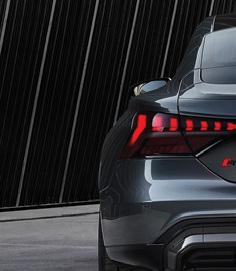
The trader added it had obtained a CarJam report when it bought the vehicle, which highlighted no such issues.

Company spokesman Arshdeep Gogia questioned whether it was even possible to tamper with a modern car’s odometer.
The case
The BMW was imported from Singapore and passed a warrant of fitness (WOF) on February 9, 2022, when its recorded odometer reading was 77,176km. It was registered in New Zealand on March 8 last year with 79,650km on the clock.
Post-purchase, Vaatiuola said the car was occasionally hard to start, so in October he had it assessed by
Christchurch BMW, which found it had a faulty fuel-rail sensor.
He paid $300 towards that repair with the remainder paid by Quest Insurance Group under his mechanical breakdown insurance.
One month later, Vaatiuola noticed the vehicle had an unusual vibration. Christchurch BMW found the front prop joint, which connected the driveshaft to the gearbox, was “falling to bits”. He was charged $379 for this assessment.
The repairer also provided the record of servicing and repairs performed overseas. After reviewing these documents, Vaatiuola was concerned when he discovered the car was last serviced in Singapore in October 2017 when its odometer reading was 102,573km.
As a result, he alleged the odometer had been tampered with and Brother Motors had engaged in misleading conduct in breach of the FTA by misrepresenting the vehicle’s mileage.
The finding
The adjudicator needed to consider a possible breach of the FTA in this matter.
The question was whether a reasonable person in Vaatiuola’s situation – that was, with the characteristics known to him or of which he should have been aware – would likely have been misled or deceived. If so, a breach of section nine of the act would be established.
The BMW’s true mileage was much higher than what was
represented on the VOSA and the damage to its prop joint was consistent with a car that had travelled much more than 100,000km.
Therefore, the tribunal found that someone in Singapore had tampered with the odometer.
Brother Motors said it had no knowledge this had happened, but that provided no defence.
The FTA is a strict liability statute in that the representor can have liability under the act even if it believes the representation to be true.
Unfortunately for the trader, software and tools exist that can be used to tamper with odometer readings in modern vehicles.
Consequently, Brother Motors had unintentionally engaged in misleading conduct and Vaatiuola had been misled because he had bought the BMW believing it had a lower mileage. He had also suffered loss because he paid more for the car than it was worth, and incurred repair and diagnosis costs that a reasonable consumer wouldn’t expect to incur in a lowmileage vehicle.
Brother Motors’ conduct in misrepresenting the odometer reading was the effective cause of the buyer’s loss because the tribunal was satisfied that he wouldn’t have purchased it had he known the actual mileage was much higher. Having satisfied issues under section 43 of the FTA, the tribunal found Vaatiuola was entitled to have the contract to purchase the vehicle made void.
The case: The buyer wanted to reject his car after he discovered its mileage was higher than what was reported when it was supplied. The trader bought the used import off its first Kiwi owner and didn’t believe it was possible to change the odometer on a modern vehicle.
The decision: The dealer was ordered to collect the car, refund the $1,000 deposit and pay repair costs to the purchaser for breaching the Fair Trading Act (FTA).
At: The Motor Vehicle Disputes Tribunal via video link.
Under section 43, he was also entitled to a refund from the trader of his $1,000 deposit, and the dealer had to pay him $679 for diagnosis and repairs to the car.
However, the tribunal declined to award any compensation for repaying the principal made under the collateral credit because Vaatiuola had missed many payments to the extent the outstanding balance had been reduced by less than $20 in the 12 months post-purchase.
Although he wasn’t entitled to recover any loan payments made, he was entitled to have his ongoing rights and obligations under it assigned to Brother Motors through the provisions of the Motor Vehicle Sales Act.
Orders
The transaction between Vaatiuola and Brother Motors was declared void. The buyer’s rights and obligations under the loan were assigned to the trader, which also had to pay the consumer $1,679 and collect the car.
www.autofile.co.nz 27
Our reports have more data than any other provider One click digital signing of all documents Simple to use, lightning fast and device friendly Pay for what you use, no more Dealer change of ownerships Integrates with your DMS Locally owned and operated Contact Mike on 021 410 134 or info@autocheck.co.nz

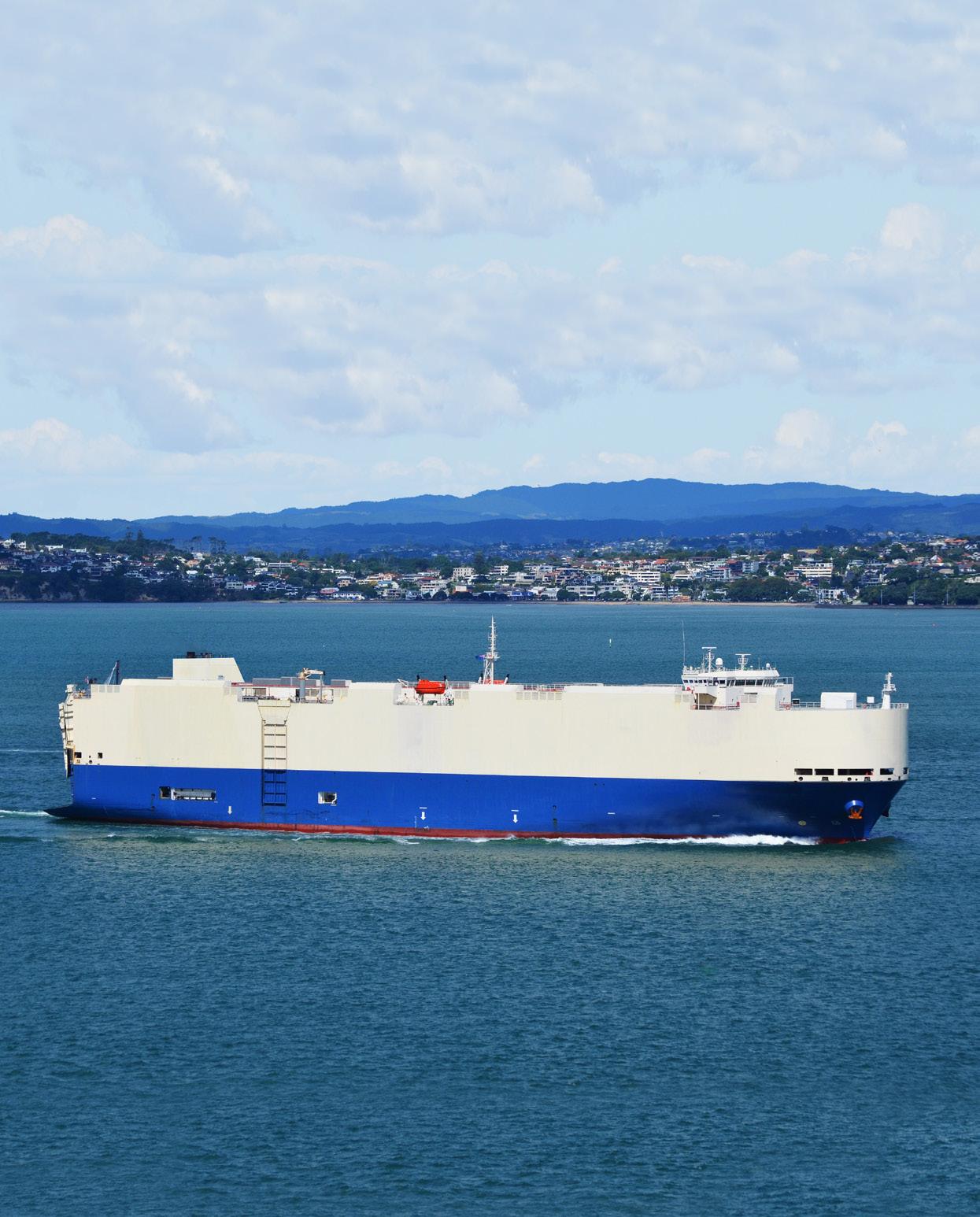


28 www.autofile.co.nz Phone 0800 ARMACUP (0800 276 2287) email Enquiries.NZ@armacup.com www.armacup.com Shipping to Driving the Pacific... For our latest schedule, please refer to armacup.co.nz/schedules/asia-to-oceania
Total new cars
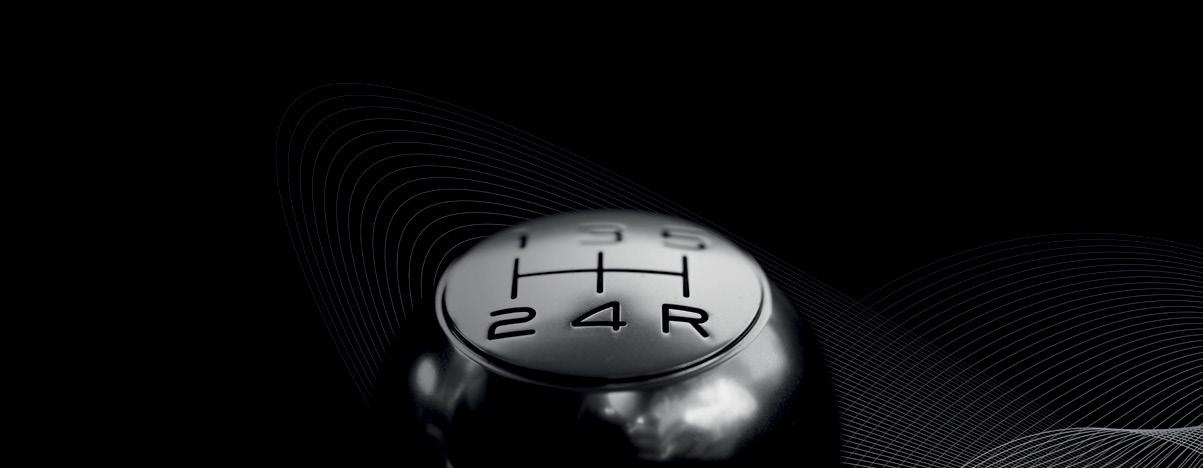
Total imported used cars
8,921
OTHERS (Chatham Islands, overseas, unknown) NORTHLAND NEW: 2022: USED: 2022: BAY OF PLENTY NEW: 2022: USED: 2022: AUCKLAND NEW: 2022: USED: 2022: GISBORNE NEW: 2022: USED: 2022: HAWKE ’S BAY NEW: 2022: USED: 2022: MANAWATU –WHANGANUI NEW: 2022: USED: 2022: WELLINGTON NEW: 2022: USED: 2022: MARLBOROUGH NEW: 2022: USED: 2022: CANTERBURY NEW: 2022: USED: 2022: OTAGO NEW: 2022: USED: 2022: SOUTHLAND WAIKATO NEW: 2022: USED: 2022: TARANAKI NEW: 2022: USED: 2022: NELSON NEW: 2022: USED: 2022: TASMAN NEW: 2022: USED: 2022: WEST COAST NEW: 2022: USED: 2022: 249 302 291 284 14.4% 6.3% 967 1,231 1,588 1,158 39.1% 6.3% 10 33 36 42 72.2% 21.4% 53 44 51 37 3.9% 18.9% 44 55 56 66 21.4% 16.7% 50 69 69 91 27.5% 24.2% 818 701 1,011 591 19.1% 18.6% 274 249 348 210 21.3% 18.6% 140 126 161 119 13.0% 5.9% 186 175 245 123 24.1% 42.3% 45 45 40 44 12.5% 2.3% 395 382 472 366 16.3% 4.4% 651 681 868 550 25.0% 23.8% 3,962 4,538 4,977 3,421 20.4% 32.7% 210 162 231 147 9.1% 10.2% Whangarei Auckland Hamilton Thames Tauranga Rotorua Gisborne Napier New Plymouth Wanganui Palmerston North Masterton Wellington Nelson Blenheim Greymouth Whangarei Auckland Hamilton Thames Tauranga Rotorua Gisborne Napier New Plymouth Wanganui Palmerston North Masterton Wellington Nelson Blenheim Greymouth Westport Christchurch Timaru Oamaru Dunedin Invercargill Whangarei Auckland Hamilton Thames Tauranga Rotorua Gisborne Napier New Plymouth Wanganui Palmerston North Masterton Wellington Nelson Blenheim Greymouth Whangarei Auckland Hamilton Thames A R OUND T H E COUNT R Y Septemb er 2023
2022: 7,355 21.3 %
2022: 10,585 23.0 %
8,150
FINANCE TO SHIFT Y OUR BUSINESS I N TO TOP GEAR Your Vehicle Import Finance Specialist To find out more visit us at www.blackbirdf і nance.co.nz or call us on 0800 000 999
Imported Passenger Vehicle Sales by Make - September 2023
Imported Passenger Vehicle Sales by Model - September 2023
WHAT DO YOU WANT FROM YOUR VEHICLE SUPPLIER?
30 www.autofile.co.nz
MAKE MODEL SEP '23 SEP '22 +/- % SEP 23 MKT SHARE 2023 YEAR TO DATE 2023 MKT SHARE Toyota Aqua 1,628 1,046 55.6 18.2% 12,487 15.1% Toyota Prius 1,067 528 102.1 12.0% 8,400 10.1% Nissan Leaf 450 217 107.4 5.0% 2,596 3.1% Toyota Corolla 386 277 39.4 4.3% 3,124 3.8% Nissan Note 371 187 98.4 4.2% 2,931 3.5% Mazda Axela 326 435 -25.1 3.7% 4,046 4.9% Honda Fit 312 197 58.4 3.5% 2,735 3.3% Toyota C-HR 225 190 18.4 2.5% 1,746 2.1% Mazda Demio 222 239 -7.1 2.5% 2,278 2.7% Subaru Impreza 194 207 -6.3 2.2% 2,155 2.6% Mitsubishi Outlander 163 170 -4.1 1.8% 1,660 2.0% Suzuki Swift 160 120 33.3 1.8% 1,516 1.8% Nissan X-Trail 159 139 14.4 1.8% 1,705 2.1% Nissan Serena 145 117 23.9 1.6% 2,104 2.5% Toyota Vitz 141 63 123.8 1.6% 1,234 1.5% Mazda CX-5 121 205 -41.0 1.4% 1,557 1.9% Subaru XV 106 96 10.4 1.2% 1,198 1.4% Volkswagen Golf 104 209 -50.2 1.2% 1,809 2.2% Toyota Spade 90 24 275.0 1.0% 469 0.6% Toyota Camry 89 74 20.3 1.0% 864 1.0% Toyota Sai 87 75 16.0 1.0% 956 1.2% Honda Vezel 84 49 71.4 0.9% 757 0.9% Mazda Premacy 74 83 -10.8 0.8% 882 1.1% Mazda Atenza 73 105 -30.5 0.8% 802 1.0% Toyota Wish 56 63 -11.1 0.6% 689 0.8% Toyota Yaris 55 16 243.8 0.6% 184 0.2% Toyota Auris 54 60 -10.0 0.6% 425 0.5% Honda CR-Z 53 30 76.7 0.6% 416 0.5% Nissan Juke 49 47 4.3 0.5% 534 0.6% Toyota RAV4 46 11 318.2 0.5% 258 0.3% Toyota Sienta 46 16 187.5 0.5% 330 0.4% Lexus CT 200h 44 23 91.3 0.5% 308 0.4% BMW 320i 40 47 -14.9 0.4% 342 0.4% Honda Insight 38 33 15.2 0.4% 315 0.4% Volkswagen Polo 37 59 -37.3 0.4% 521 0.6% Others 1,626 1,898 -14.3 18.2% 18,566 22.4% Total 8,921 7,355 21.3 100.0% 82,899 100.0%
MAKE SEP '23 SEP '22 +/- % SEP '23 MKT SHARE 2023 YEAR TO DATE 2023 MKT SHARE Toyota 4,317 2,714 59.1 48.4% 34,525 41.6% Nissan 1,326 920 44.1 14.9% 11,786 14.2% Mazda 889 1,147 -22.5 10.0% 10,354 12.5% Honda 666 429 55.2 7.5% 5,959 7.2% Subaru 388 472 -17.8 4.3% 4,795 5.8% Mitsubishi 235 254 -7.5 2.6% 2,354 2.8% Suzuki 224 153 46.4 2.5% 2,196 2.6% BMW 182 268 -32.1 2.0% 2,289 2.8% Volkswagen 160 320 -50.0 1.8% 2,719 3.3% Lexus 140 87 60.9 1.6% 1,098 1.3% Mercedes-Benz 115 135 -14.8 1.3% 1,284 1.5% Audi 101 167 -39.5 1.1% 1,517 1.8% Ford 24 54 -55.6 0.3% 345 0.4% Chevrolet 18 24 -25.0 0.2% 130 0.2% Volvo 14 33 -57.6 0.2% 170 0.2% Land Rover 13 20 -35.0 0.1% 139 0.2% Peugeot 11 6 83.3 0.1% 72 0.1% Porsche 11 19 -42.1 0.1% 99 0.1% Tesla 10 3 233.3 0.1% 41 0.0% Jaguar 9 14 -35.7 0.1% 97 0.1% Holden 7 13 -46.2 0.1% 55 0.1% Mini 7 9 -22.2 0.1% 133 0.2% Smart 7 5 40.0 0.1% 41 0.0% Dodge 6 11 -45.5 0.1% 72 0.1% Jeep 5 10 -50.0 0.1% 76 0.1% Kia 5 4 25.0 0.1% 42 0.1% BYD 4 1 300.0 0.0% 26 0.0% Chrysler 4 3 33.3 0.0% 54 0.1% Hyundai 3 18 -83.3 0.0% 59 0.1% Daihatsu 2 4 -50.0 0.0% 48 0.1% Lincoln 2 0 200.0 0.0% 3 0.0% MG 2 3 -33.3 0.0% 17 0.0% Alfa Romeo 1 2 -50.0 0.0% 12 0.0% Aston Martin 1 2 -50.0 0.0% 10 0.0% Bentley 1 0 100.0 0.0% 26 0.0% Others 11 31 -64.5 0.1% 256 0.3% Total 8,921 7,355 21.3 100.0% 82,899 100.0%
Group predicts record results
Turners Automotive Group is expecting to set a record in its current financial year.
The company says it’s on course to surpass the $45.5 million net profit before tax achieved in the 12-month period to the end of April 2023.
It has reported that trading results have been positive in recent months and the company’s dividend is forecast to be at least 24 cents per share for an increase of four per cent.
A further upside in the automotive retail segment of the business is predicted from the second half of the 2023/24 financial year with new branches in Timaru and Napier set to open in November.

In an announcement to the NZX, Turners expects the market to remain supply constrained “with supply of vehicles an advantage” for the company.
The transition of wholesale auction units into its retail sales
channel is also set to underpin further market share growth.
Looking ahead in other areas, the company adds quality and margin management remain key short-term priorities in its finance division.
“The economic downturn is impacting on arrears, but they remain within expected levels,” Turners’ announcement states.
“Margins are expected to expand in near term although [there is] still some sensitivity to the OCR track.”

In insurance, new policy sales are benefiting from the company’s distribution and market-share gains, while claims ratios are stable. Investment returns continue to improve.
When it comes to credit management, debt-load levels are increasing along with the volume of payment arrangements in place.
“As the economic conditions
Used Imported Passenger Registrations - 2019-2023
worsen, we expect to see further lift in debt loads from corporate and small and medium-sized enterprise clients. We are wellpositioned for the next stage of the New Zealand credit cycle.”
Grant Baker, chairman, says Turners’ record result for the 2023 financial year was achieved despite macroeconomic headwinds.
The automotive retail division’s
Spike in sales
profit grew 28 per cent yearon-year following a focus on domestic sourcing and retail optimisation.
“New Zealand and global economic challenges will persist over the next 12-24 months,” adds Baker.
“[But we] still see opportunities in the markets we operate in and are well-positioned to take advantage of these.”
Baker adds Turners is on-track to achieve its goal of 10 per cent market share in motor-vehicle retail in the near term, and if that part of the business is strong it has a “halo effect” for finance and insurance.
There were 8,921 used-imported cars registered during September, which was up by 21.3 per cent compared to 7,355 in the same month of 2022. The marques’ table was topped by the Toyota Aqua with 1,628 units. Second spot went to Toyota’s Prius with 1,067 while Nissan’s Leaf came third with 450.
Toyota also headed up the marques’ ladder with 4,317 units. Nissan came second with 1,326 and Mazda was third on 889.
Todd Hunter, chief executive officer, adds that car sales for the company climbed by 14 per cent between the 2022 and 2023 financial years, and year-todate figures for the 2024 period have been tracking ahead of the prior year.
www.autofile.co.nz 31 contact: Taka Arimoto email: arimoto@heiwa-auto.co.jp www.heiwa-auctions.com ü SOLID COMPANY ü QUALITY VEHICLES ü CHOICE & VARIETY OF STOCK ü EXPERIENCED AGENTS ü DEALER ONLY SUPPLIER ü GREAT VALUE FOR MONEY 0 5,000 10,000 15,000 20,000 25,000 Jan Feb Mar Apr May Jun Jul Aug Sep Oct Nov Dec 2019 2020 2021 2022 2023
Used Imported Passenger Vehicle Sales by Motive Power - September 2023 MAKE SEP '23 SEP 22 +/- % SEP 23 MKT SHARE 2023 YEAR TO DATE 2023 MKT SHARE Full battery electric 492 232 112.1% 5.5% 2,797 3.4% Plug-in hybrid electric 231 170 35.9% 2.6% 1,775 2.1% Non plug-in petrol hybrid 4,993 3,012 65.8% 56.0% 40,282 48.6% Petrol 3,128 3,744 -16.5% 35.1% 36,782 44.4% Diesel 77 197 -60.9% 0.9% 1,262 1.5% Others (includes non plug-in diesel hybrid, fuel cell) 0 0 0.0% 0.0% 1 0.0% Total 8,921 7,355 21.3% 82,899
Agency changes import rule
Waka Kotahi has dropped its requirement for vehicle identification numbers (VINs) to be etched into the rear windows of used vehicles when certified for entry into New Zealand’s fleet.
The rule change issued by the transport agency also applies to vehicles being re-registered.
A spokesman says: “We have removed the requirement to etch a VIN into the rear window of a used import and a previously registered vehicle re-entering service.
“This process no longer has a clear purpose or result. Removing it will save inspectors time, reduce
risks to their health and safety, and reduce inspection organisation equipment and compliance costs.”
The agency has also issued previews of October’s vehicle inspection requirements manual.
When it comes to in-service certification, it is updating its rules for recording 28-day conditional permits, and inspecting motorhomes and caravans.
Also covered are modifications to electric vehicles, plug-in hybrids and hybrids, the log-bolster certification and overlays on glassbreak emergency exits fitted in passenger service vehicles.
Other changes include new
images to help identify excessive damage to airbag suspension systems, adding a note and reason for rejecting all-terrain vehicles in left-hand-drive configuration, and a new jacking point image.
The summary of changes for entry certification includes extra information on roll-over strength, updates to the technical bulletin about US specialist-built vehicles and removing the requirement to print a dummy MR2A if the vehicle already has a VIN.
In addition, a model when it comes to warrants and certificates of fitness outlines best practice for inspecting organisations (IOs)
USED IMPORTED PASSENGER VEHICLE ARRIVALS
to develop and maintain quality management systems.
Waka Kotahi is making some changes to align with current practices. For example, IOs will be required to have public liability and professional indemnity insurance, and links to assessment check sheets are being introduced.
USED IMPORTS UP 27%
There were 12,075 used cars imported into New Zealand last month to bring the year-to-date total to 89,878.
That represents an increase of 27.2 per cent when compared to 70,641 for the same period in 2022.
Used Imported Passenger Vehicles By Country Of Export
32 www.autofile.co.nz Door-to-Door vehicle shipping experts ContaCt us today! To and from Japan, USa, UK, aUSTralia, Singapore, and The pacific Ph +64 9 303 0075 www.mmnz.biz www.mmnz.biz
20,000 19,000 18,000 17,000 16,000 15,000 14,000 13,000 12,000 11,000 10,000 9,000 8,000 7,000 6,000 4,000 JAN FEB MAR APR MAY JUN JUL AUG SEPT OCT NOV DEC 2014 2015 2017 2021 2018 2020 2019 2016 2013 2022 2023
COUNTRY OF EXPORT 2023 2022 2021 JAN ’23 FEB ’23 MAR ’23 APR ’23 MAY ’23 JUN ’23 JUL ’23 AUG ’23 SEP ’23 SEP MKT SHARE % 2023 TOTAL 2022 TOTAL MKT SHARE 2021 TOTAL MKT SHARE Australia 126 76 136 85 125 96 90 96 91 0.8% 921 2,353 2.6% 3,072 2.4% Great Britain 34 17 24 23 20 17 15 29 15 0.1% 194 512 0.6% 1,259 1.0% Japan 4,846 7,246 11,225 8,607 10,740 12,717 10,854 10,093 11,881 98.4% 88,209 87,740 95.6% 123,508 94.8% Singapore 23 3 24 27 28 20 20 15 13 0.1% 173 423 0.5% 1,378 1.1% USA 29 18 21 10 21 25 21 22 42 0.3% 209 487 0.5% 697 0.5% Other countries 24 12 12 16 20 25 14 16 33 0.3% 172 250 0.3% 403 0.3% Total 5,082 7,372 11,442 8,768 10,954 12,900 11,014 10,271 12,075 100.0% 89,878 91,765 100.0% 130,317 100.0%
Website for ratings improved
Waka Kotahi is continuing to refine the dealers’ section on the Rightcar website to make it easier to find information.
The transport agency added more options to the navigation menu in August so importers can link to all clean-car information they need from one place.

It has now rolled out improvements to Rightcar’s vehicle look-up tool. These include adding more filters and criteria to the search function, and displaying the results in a tabular format so different ones can be easily compared.
“We hope you find the changes helpful,” says a Waka Kotahi spokesman. “If you have any feedback, we’re keen to hear from you.
“For those of you who use a mobile phone to access the CCS [clean car standard] system, you may also notice the process of accepting vehicles is now smoother.”
The agency’s CCS account register is still available online. It was set up in early June to help importers get in touch with each other if they want to buy or sell carbon dioxide (CO2) credits.
It was originally intended to be a temporary measure to support
SECONDHAND CAR SALES - September 2023


the start of credit transfers.
However, Waka Kotahi has had feedback from many importers that they would like the register to be available for a while longer, so it is being kept in place for now.
Email CCSImporter@nzta.govt.nz to be added or removed from it.
This month, the agency launched multi-factor authentication (MFA) for using its CCS system to transfer CO2 credits.
MFA provides an extra security measure that validates user identity. It’s already used across most Waka Kotahi IT platforms.
It should be noted that if you try to repeatedly submit an invalid
code or keep asking for a new code, you’ll be temporarily locked out for up to 10 minutes.
TRADING STAYS STEADY
Dealers sold 15,679 second-hand passenger vehicles to members of the public last month. That was down by 1.9 per cent from 15,988 compared to September last year. There were 12,725 trade-ins last month, up by 4.9 per cent from 12,127.

Year to date, dealers have sold 138,536 units to the public – down by 0.2 per cent compared to 138,775 vehicles sold during the same period in 2022.

www.autofile.co.nz 33
DEALER TO PUBLIC PUBLIC TO PUBLIC PUBLIC TO DEALER REGION SEP '23 SEP 22 +/- % MARKET SHARE SEP '23 SEP '22 +/- % SEP '23 SEP '22 +/- % Northland 518 570 -9.1 3.30 1,652 1,901 -13.1 190 221 -14.0 Auckland 5,375 5,524 -2.7 34.28 12,948 12,505 3.5 5,628 5,419 3.9 Waikato 1,600 1,578 1.4 10.20 3,701 3,977 -6.9 1,074 1,044 2.9 Bay of Plenty 1,055 1,044 1.1 6.73 2,608 2,770 -5.8 581 589 -1.4 Gisborne 152 123 23.6 0.97 338 409 -17.4 59 31 90.3 Hawke’s Bay 604 582 3.8 3.85 1,327 1,384 -4.1 371 360 3.1 Taranaki 391 374 4.5 2.49 987 1,128 -12.5 195 197 -1.0 Manawatu-Whanganui 824 876 -5.9 5.26 2,068 2,136 -3.2 785 586 34.0 Wellington 1,392 1,426 -2.4 8.88 2,857 3,333 -14.3 1,078 1,045 3.2 Tasman 138 150 -8.0 0.88 410 452 -9.3 13 25 -48.0 Nelson 121 137 -11.7 0.77 372 427 -12.9 142 151 -6.0 Marlborough 147 167 -12.0 0.94 325 394 -17.5 64 67 -4.5 West Coast 124 99 25.3 0.79 272 325 -16.3 34 43 -20.9 Canterbury 2,195 2,208 -0.6 14.00 4,919 5,130 -4.1 1,948 1,754 11.1 Otago 690 755 -8.6 4.40 1,772 1,797 -1.4 427 444 -3.8 Southland 304 316 -3.8 1.94 817 914 -10.6 136 151 -9.9 Other 49 59 -16.9 0.31 137 212 -35.4 0 0 0.0 NZ Total 15,679 15,988 -1.9 100.00 37,510 39,194 -4.3 12,725 12,127 4.9 Visit autofile.co.nz/jobs to view the latest jobs in the automotive industry
new cars
New Passenger Vehicle Sales by Make - September 2023
New Passenger Vehicle Sales by Model - September 2023
34 www.autofile.co.nz
MAKE SEP '23 SEP 22 +/- % SEP '23 MKT SHARE 2023 YEAR TO DATE 2023 MKT SHARE Toyota 1,885 1,508 25.0 23.1% 14,480 18.0% Mitsubishi 808 1,648 -51.0 9.9% 7,528 9.4% Tesla 760 1,554 -51.1 9.3% 3,636 4.5% Ford 478 174 174.7 5.9% 3,466 4.3% MG 467 433 7.9 5.7% 3,812 4.7% Suzuki 408 751 -45.7 5.0% 5,488 6.8% Kia 341 805 -57.6 4.2% 8,078 10.0% Hyundai 318 572 -44.4 3.9% 5,546 6.9% BYD 243 220 10.5 3.0% 2,276 2.8% Mazda 205 393 -47.8 2.5% 2,970 3.7% Audi 203 117 73.5 2.5% 1,105 1.4% BMW 190 116 63.8 2.3% 1,367 1.7% Honda 182 203 -10.3 2.2% 2,621 3.3% Mini 144 96 50.0 1.8% 704 0.9% Volkswagen 142 275 -48.4 1.7% 2,250 2.8% Nissan 138 76 81.6 1.7% 2,409 3.0% Mercedes-Benz 126 151 -16.6 1.5% 1,199 1.5% Land Rover 125 106 17.9 1.5% 1,018 1.3% Skoda 109 184 -40.8 1.3% 1,299 1.6% Subaru 109 207 -47.3 1.3% 1,681 2.1% Lexus 106 72 47.2 1.3% 974 1.2% Peugeot 83 97 -14.4 1.0% 662 0.8% GWM 77 0 7,700.0 0.9% 220 0.3% Haval 55 274 -79.9 0.7% 1,850 2.3% Cupra 54 41 31.7 0.7% 301 0.4% Porsche 49 51 -3.9 0.6% 367 0.5% Volvo 45 70 -35.7 0.6% 496 0.6% Jeep 44 25 76.0 0.5% 300 0.4% Polestar 37 102 -63.7 0.5% 335 0.4% Opel 36 0 3,600.0 0.4% 244 0.3% Mahindra 26 1 2,500.0 0.3% 241 0.3% Citroen 22 16 37.5 0.3% 146 0.2% Jaguar 22 33 -33.3 0.3% 147 0.2% Ineos 15 0 1,500.0 0.2% 53 0.1% Seat 15 31 -51.6 0.2% 55 0.1% Alfa Romeo 14 17 -17.6 0.2% 53 0.1% SsangYong 13 69 -81.2 0.2% 283 0.4% Bentley 10 6 66.7 0.1% 44 0.1% Isuzu 8 17 -52.9 0.1% 116 0.1% Aston Martin 7 5 40.0 0.1% 42 0.1% Fiat 5 25 -80.0 0.1% 96 0.1% Ferrari 4 3 33.3 0.0% 38 0.0% Maserati 4 6 -33.3 0.0% 51 0.1% Chevrolet 3 1 200.0 0.0% 28 0.0% Others 15 34 -55.9 0.2% 317 0.4% Total 8,150 10,585 -23.0 100.0% 80,392 100.0%
MAKE MODEL SEP 23 SEP '22 +/- % SEP '23 MKT SHARE 2023 YEAR TO DATE 2023 MKT SHARE Tesla Model Y 697 1,502 -53.6 8.6% 2,895 3.6% Toyota RAV4 683 317 115.5 8.4% 5,797 7.2% Toyota Yaris Cross 316 327 -3.4 3.9% 1,328 1.7% Mitsubishi ASX 286 409 -30.1 3.5% 972 1.2% Toyota Corolla 269 202 33.2 3.3% 1,490 1.9% Mitsubishi Outlander 268 867 -69.1 3.3% 2,616 3.3% MG 4 250 0 25,000.0 3.1% 347 0.4% Suzuki Swift 231 336 -31.3 2.8% 3,152 3.9% Mitsubishi Eclipse Cross 198 262 -24.4 2.4% 2,691 3.3% Ford Escape 180 52 246.2 2.2% 1,008 1.3% MG ZS 159 321 -50.5 2.0% 2,627 3.3% Ford Everest 155 39 297.4 1.9% 1,331 1.7% BYD Atto 3 136 220 -38.2 1.7% 2,161 2.7% Toyota Yaris 133 162 -17.9 1.6% 918 1.1% Toyota Corolla Cross 132 54 144.4 1.6% 975 1.2% Honda Jazz 113 91 24.2 1.4% 1,429 1.8% Kia Niro 111 131 -15.3 1.4% 1,606 2.0% BYD Dolphin 107 0 10,700.0 1.3% 115 0.1% Mazda CX-5 94 199 -52.8 1.2% 1,315 1.6% Mini Countryman 92 45 104.4 1.1% 374 0.5% Hyundai Tucson 89 70 27.1 1.1% 1,709 2.1% Toyota C-HR 88 72 22.2 1.1% 1,048 1.3% Toyota Camry 85 27 214.8 1.0% 342 0.4% Toyota Highlander 74 155 -52.3 0.9% 1,056 1.3% Hyundai Santa Fe 66 62 6.5 0.8% 800 1.0% Hyundai Kona 64 171 -62.6 0.8% 1,512 1.9% Haval H6 63 175 -64.0 0.8% 976 1.2% Tesla Model 3 63 52 21.2 0.8% 741 0.9% Suzuki Ignis 62 43 44.2 0.8% 634 0.8% Nissan X-Trail 59 57 3.5 0.7% 1,341 1.7% Suzuki Vitara 57 173 -67.1 0.7% 785 1.0% Kia Sportage 56 158 -64.6 0.7% 1,115 1.4% Hyundai I30 55 17 223.5 0.7% 343 0.4% Kia Seltos 55 174 -68.4 0.7% 1,391 1.7% Nissan Qashqai 52 0 5,200.0 0.6% 721 0.9% Toyota Land Cruiser 52 31 67.7 0.6% 445 0.6% Ford Mustang Mach-E 48 0 4,800.0 0.6% 319 0.4% Mitsubishi Mirage 48 21 128.6 0.6% 652 0.8% Ford Focus 46 39 17.9 0.6% 233 0.3% Kia EV6 45 31 45.2 0.6% 668 0.8% Lexus UX 250h 44 6 633.3 0.5% 263 0.3% Audi Q4 e-tron 43 0 4,300.0 0.5% 75 0.1% BMW X5 43 18 138.9 0.5% 216 0.3% Honda ZR-V 43 0 4,300.0 0.5% 393 0.5% Skoda Enyaq 43 0 4,300.0 0.5% 43 0.1% Others 2,097 3,497 -40.0 25.7% 27,424 34.1% Total 8,150 10,585 -23.0 100.0% 80,392 100.0%
Action to reduce waiting times
Ford has taken a major step to bolster the delivery of its models to New Zealand and Australia.
The company has signed a three-year lease on a roll-on, rolloff vessel to cut waiting times on both sides of the Tasman.
The Grand Quest is set to deliver models – particularly the Ranger and Everest – from the blue oval’s plants in Thailand.
“We are investing significantly in tackling ongoing supply-chain issues head-on with a focus on ensuring customers’ cars are delivered as quickly as possible,” explains Andrew Birkic, president and chief executive officer of Ford Australia and New Zealand.
“Securing an exclusive threeyear lease of the Grand Quest will allow Ford to deliver more vehicles to New Zealand and Australia as we continue to face unprecedented levels of demand.”
He adds that along with the Grand Quest, which has capacity for 2,600 vehicles, and regular shipments shared with other manufacturers, the company will continue to charter vessels for a handful of trips at a time.
The Grand Quest is operated by Polaris Autoliners, which works closely with Ford Motor Company globally.
“In a time of great logistical uncertainty, taking the initiative to lease our own ship gives Ford
the ability to determine shipping routes and volumes by port, allowing us greater control in challenging conditions,” says Iris Moreno, vehicle logistics manager of Ford Australia.
In a further effort to reduce delivery delays due to port congestion across the ditch, the marque has also begun transporting some new Rangers and Everests in shipping containers to tap into another unloading option.
Meanwhile, SAIC Motor’s new car carrier is headed for New Zealand as the Chinese company expands its seagoing fleet further over the next three years.
Called the SAIC Anji Sincerity, it is the company’s first custombuilt ro-ro and is powered by liquefied natural gas (LNG). It can transport up to 7,600 vehicles.
New Ford cars being offloaded from the Grand Quest, left, and SAIC Motor’s LPG-powered ro-ro
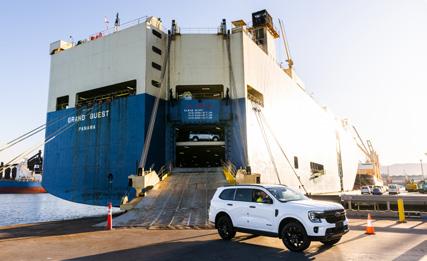
vessel is expected to be put into use next year on the company’s routes to Europe, Australia and New Zealand.
It was built by Jiangnan Shipyard Company and was officially launched on August 29. In addition to its LNG dual-fuel technology, it boasts low-carbon environmental protection.
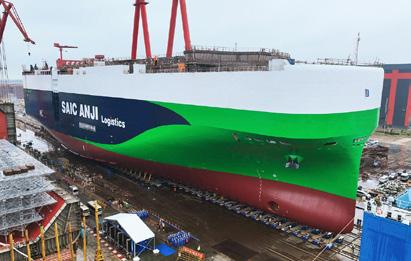
SAIC Motor notes that 12 new vehicle carriers are due to be launched by its subsidiary, SAIC
First for electric
Registrations of new cars came in at 8,150 last month. That was down by 23 per cent from 10,585 during the same month of last year.
Tesla’s Model Y was September’s best-seller on 697 and market share of 8.6 per cent. Toyota’s RAV4 and Yaris Cross were second and third with 683 and 316. The top five was completed by the Mitsubishi ASX on 286 and Toyota’s Corolla with 269.
China’s largest carmaker, which has MG among its brands, says the
New Passenger Registrations - 2019-2023
Anji Logistics Company, between 2024 to 2026 as it expands the group’s fleet.
A spokesman for the company says: “At the same time, SAIC Motor will maintain long-term co-operation with domestic and foreign car-logistics companies, such as China COSCO Shipping Group and WWL, to promote the global expansion of Chinese selfowned vehicle brands.”
In recent years, SAIC Motor has witnessed its sales surge in overseas markets. In 2022, they exceeded 1.01 million, a year-onyear increase of 45.9 per cent, ranking first among domestic car companies for seven consecutive years. Between January to July this year, it sold 630,000 units overseas.
SAIC Anji Logistics is the world’s largest automobile logistics company with its distribution network covering more than 100 countries. It has an annual shipping capacity of more than 10m units.
Passenger Vehicle Sales by Motive Power - September 2023
www.autofile.co.nz 35 new cars
0 2,000 4,000 6,000 8,000 10,000 12,000 14,000 16,000 18,000 Jan Feb Mar Apr May Jun Jul Aug Sep Oct Nov Dec 2019 2020 2021 2022 2023
MAKE SEP '23 SEP 22 +/- % SEP 23 MKT SHARE 2023 YEAR TO DATE 2023 MKT SHARE Full battery electric 2,029 2,351 -13.7% 24.9% 13,067 16.3% Plug-in hybrid electric 768 490 56.7% 9.4% 5,917 7.4% Non plug-in petrol hybrid 2,232 1,671 33.6% 27.4% 20,441 25.4% Petrol 2,580 5,387 -52.1% 31.7% 34,165 42.5% Diesel 541 686 -21.1% 6.6% 6,800 8.5% Others (includes non plug-in diesel hybrid, fuel cell) 0 0 0.0% 0.0% 2 0.0% Total 8,150 10,585 -23.0% 80,392
New
Supply to fulfil buyer demand
The Colonial Motor Company is expecting higher fuel prices, inflation, government interventions and a continued cooling economy to take a heavier toll on its customers and the business.

Chairman Ash Waugh says these trading conditions could well go into 2024 “and potentially beyond”.
“Balancing this outlook somewhat will be a continued refresh of products from Ford and Mazda,” he adds.


“While overall the demand for new vehicles is forecast to decline, these new models – together with improving availability of other hybrid and electrified vehicles –will support customer enquiry
coming into our dealerships in a weakening market.”
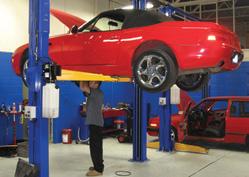
Waugh confirms the company’s management is continuing to explore new opportunities to expand the group’s core
competencies “to provide resilience to the overall operations”.
His outlook comes on the back of Colonial notching up a “strong result in a tightening market” with trading profit after tax for the year
New Commercial Sales - 2019-2023
to June 30 coming in at $30.34 million, which was a decrease of nine per cent when compared to 2021/22.

Trading conditions for light vehicles were “inconsistent” through the second half of the 2023 financial year, which Waugh puts down to changes to the government’s clean-car scheme and taxes on higher-emitting vehicles driving artificial, short-term demand.

“Coupled with this came the challenge of lumpy supply for key products. Despite these challenges, our light-vehicle dealerships generally posted strong full-year results.”
Waugh notes in a report to shareholders that Colonial’s tractor
New Commercial Sales by Make - September 2023
New Commercial Sales by Model - September 2023
36 www.autofile.co.nz Know what’s going on in YOUR industry 0 1,000 2,000 3,000 4,000 5,000 6,000 7,000 8,000 9,000 10,000 Jan Feb Mar Apr May Jun Jul Aug Sep Oct Nov Dec 2019 2020 2021 2022 2023
MAKE SEP 23 SEP 22 +/- % SEP '23 MKT SHARE 2023 YEAR TO DATE 2023 MKT SHARE Toyota 759 1,154 -34.2 27.5% 8,835 28.1% Ford 647 1,058 -38.8 23.5% 8,546 27.2% Mitsubishi 198 444 -55.4 7.2% 2,899 9.2% Mercedes-Benz 160 110 45.5 5.8% 696 2.2% Isuzu 150 243 -38.3 5.4% 1,864 5.9% Volkswagen 128 76 68.4 4.6% 840 2.7% Fuso 115 125 -8.0 4.2% 954 3.0% Nissan 77 198 -61.1 2.8% 1,049 3.3% Scania 67 74 -9.5 2.4% 495 1.6% Hino 60 83 -27.7 2.2% 595 1.9% Iveco 54 33 63.6 2.0% 420 1.3% Fiat 41 44 -6.8 1.5% 256 0.8% Hyundai 40 37 8.1 1.4% 447 1.4% Volvo 36 13 176.9 1.3% 247 0.8% LDV 28 193 -85.5 1.0% 867 2.8% DAF 25 15 66.7 0.9% 195 0.6% UD Trucks 25 27 -7.4 0.9% 248 0.8% Kenworth 24 20 20.0 0.9% 145 0.5% Ram 16 35 -54.3 0.6% 222 0.7% Mazda 15 58 -74.1 0.5% 302 1.0% Others 94 224 -58.0 3.4% 1,338 4.3% Total 2,759 4,264 -35.3 100.0% 31,460 100.0%
MAKE MODEL SEP '23 SEP '22 +/- % SEP 23 MKT SHARE 2023 YEAR TO DATE 2023 MKT SHARE Ford Ranger 605 1,038 -41.7 21.9% 7,834 24.9% Toyota Hilux 540 986 -45.2 19.6% 6,848 21.8% Mitsubishi Triton 198 378 -47.6 7.2% 2,887 9.2% Toyota Hiace 176 138 27.5 6.4% 1,451 4.6% Mercedes-Benz Sprinter 141 99 42.4 5.1% 506 1.6% Volkswagen Amarok 78 34 129.4 2.8% 427 1.4% Nissan Navara 77 198 -61.1 2.8% 1,049 3.3% Isuzu F Series 56 65 -13.8 2.0% 424 1.3% Isuzu N Series 46 65 -29.2 1.7% 392 1.2% Toyota Land Cruiser 43 30 43.3 1.6% 531 1.7% Ford Transit 42 20 110.0 1.5% 702 2.2% Fiat Ducato 41 44 -6.8 1.5% 254 0.8% Fuso Canter 616 City 35 38 -7.9 1.3% 274 0.9% Iveco Daily 35 20 75.0 1.3% 308 1.0% Hyundai Staria Load 33 35 -5.7 1.2% 367 1.2% Isuzu D-Max 31 84 -63.1 1.1% 915 2.9% Hino 500 28 32 -12.5 1.0% 282 0.9% Hino 300 24 33 -27.3 0.9% 179 0.6% DAF CF 22 14 57.1 0.8% 178 0.6% Volkswagen Crafter 20 14 42.9 0.7% 233 0.7% Others 488 899 -45.7 17.7% 5,419 17.2% Total 2,759 4,264 -35.3 100.0% 31,460 100.0%
new commercials
dealerships had a challenging last quarter as the agricultural sector struggled with high inflation and cooling returns for primary produce, but still posted respectable full-year figures.


The results for its heavy-truck dealerships remained steady and strong demand persisted during 2022/23.
On the property front, Colonial is focusing on refurbishment projects already under way in preference to starting any major new redevelopments as building costs continue to escalate.
“The results of the committed refurbishment and redevelopment programmes have come to fruition,” enthuses Waugh. “We can be proud of the Timaru Motors, Avon City Ford and Dunedin City Motors dealership facilities that are now complete.
“In the coming year, redevelopment of Fagan Motors’ sales and administration building in Masterton is planned.
“A major development in Palmerston North to support our heavy-vehicle operations in the lower North Island continues through the planning stages, but with construction expected to
remain some time away yet.
“The impact of the negative economic environment on property values across the country has not spared the group and this is reflected in the fair-value adjustments as of June 30.”
Colonial’s board of directors has declared a fully imputed dividend of 42 cents per share for payment
Used Commercial Sales - 2019-2023
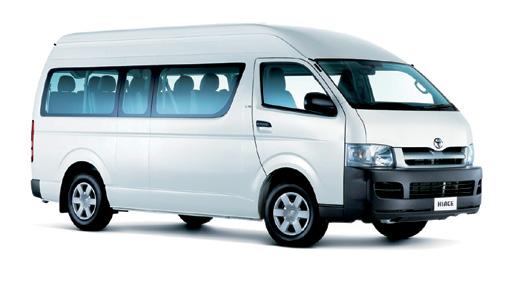
on October 2, which took the year’s total dividend to 57 cents. This equated to 61 per cent of after-tax trading profit.
The company’s 105th annual general meeting will get under way at noon on November 10 at Harbourside Function Venue in Taranaki Street, Wellington.
RANGER COMES TOP
There were 2,759 new commercials registered in September. The total was down by 35.3 per cent from 4,264 in the same month of 2022.
The Ford Ranger topped the models’ ladder with 605 units. Toyota’s Hilux and Mitsubishi’s Triton were second and third with 540 and 198 respectively.

There were 430 used-imported commercials registered last month for a year-on-year decrease of 22.8 per cent from 557.
Used Commercial Sales by Make - September 2023
Used Commercial Sales by Model - September 2023

www.autofile.co.nz 37
0 500 1,000 1,500 2,000 2,500 Jan Feb Mar Apr May Jun Jul Aug Sep Oct Nov Dec 2019 2020 2021 2022 2023
MAKE SEP '23 SEP '22 +/- % SEP '23 MKT SHARE 2023 YEAR TO DATE 2023 MKT SHARE Toyota 211 210 0.5 49.1% 2,156 45.8% Nissan 82 124 -33.9 19.1% 1,027 21.8% Hino 30 53 -43.4 7.0% 295 6.3% Mitsubishi 26 22 18.2 6.0% 243 5.2% Isuzu 22 54 -59.3 5.1% 277 5.9% Daihatsu 10 7 42.9 2.3% 85 1.8% Ford 10 12 -16.7 2.3% 151 3.2% UD Trucks 10 5 100.0 2.3% 44 0.9% Chevrolet 4 10 -60.0 0.9% 43 0.9% Mercedes-Benz 4 3 33.3 0.9% 20 0.4% Volkswagen 4 11 -63.6 0.9% 25 0.5% Fiat 2 0 200.0 0.5% 18 0.4% Iveco 2 2 0.0 0.5% 13 0.3% Kenworth 2 1 100.0 0.5% 10 0.2% Mazda 2 9 -77.8 0.5% 48 1.0% Land Rover 2 0 200.0 0.5% 6 0.1% DAF 1 1 0.0 0.2% 10 0.2% Holden 1 9 -88.9 0.2% 55 1.2% Liebherr 1 0 100.0 0.2% 1 0.0% Mitsubishi Fuso 1 0 100.0 0.2% 18 0.4% Others 3 24 -87.5 0.7% 159 3.4% Total 430 557 -22.8 100.0% 4,704 100.0%
MAKE MODEL SEP 23 SEP '22 +/- % SEP '23 MKT SHARE 2023 YEAR TO DATE 2023 MKT SHARE Toyota Hiace 147 149 -1.3 34.2% 1,548 32.9% Nissan NV350 52 70 -25.7 12.1% 633 13.5% Toyota Regius 33 10 230.0 7.7% 284 6.0% Hino Dutro 22 34 -35.3 5.1% 218 4.6% Fuso Canter 22 15 46.7 5.1% 168 3.6% Nissan Caravan 20 12 66.7 4.7% 188 4.0% Toyota Dyna 20 25 -20.0 4.7% 163 3.5% Isuzu Elf 17 41 -58.5 4.0% 188 4.0% Daihatsu Hijet 10 7 42.9 2.3% 85 1.8% Hino Ranger 5 14 -64.3 1.2% 62 1.3% Nissan Condor 5 2 150.0 1.2% 22 0.5% UD Trucks Quon 5 3 66.7 1.2% 22 0.5% Ford Ranger 4 5 -20.0 0.9% 75 1.6% Nissan Civilian 4 1 300.0 0.9% 33 0.7% Toyota Hilux 4 8 -50.0 0.9% 43 0.9% Isuzu Forward 3 11 -72.7 0.7% 68 1.4% Toyota Toyoace 3 9 -66.7 0.7% 83 1.8% Fiat Ducato 2 0 200.0 0.5% 17 0.4% Hino 300 2 0 200.0 0.5% 2 0.0% Mazda Bongo 2 1 100.0 0.5% 13 0.3% Others 48 140 -65.7 11.2% 789 16.8% Total 430 557 -22.8 100.0% 4,704 100.0% Subscribe now at www.autofile.co.nz/subscribe INSIGHT Keep up to date with the latest automotive news used commercials t
Marque buys out rental company
Toyota has bought Ezi Car Rental, a Kiwi-owned and operated business.
The acquisition was completed on October 2 with Ezi continuing to be run as a separate operation.
“We want to become the mobility company for Kiwis by providing solutions that are affordable and accessible,” says Neeraj Lala, chief executive officer of Toyota NZ.
“The acquisition of Ezi Car Rental allows us to focus on the opportunities in car usage as well as car ownership, and sits alongside our ownership of Cityhop.”
Kevin Walker, current chief executive officer, will remain with Ezi, which was established in 1998, for a period to help manage the ownership transition.
Toyota notes car rental is a key supporting industry for tourism and contributes about three per
cent to gross domestic product, while the importance of this sector to its operations is the expansion of its value chain.
“We remain committed to the rental industry as we have over the past three decades, and will continue to supply safe and reliable vehicles to all participants,” adds Lala.
“Ezi puts us at 18 airports across the country, as well as an additional six locations.”
Meanwhile, Aimee Wiley, chief executive of the Motor Industry Association, describes market conditions as staying “soft”.
She reports overall new-vehicle registrations last month came in at 10,909, which was down by 26.7 per cent when compared to 14,878 in September 2022.
Last month’s result was also 20 per cent lower than the monthly average for 2022 of 13,641 units
Dealer stock of new cars in New Zealand
and 12.4 per cent lower than the monthly average so far this year.
“September’s result is likely caused by both tougher economic conditions and continued uncertainty for the future of the clean car discount, currently hinging on the upcoming election result,” says Wiley.
“Such uncertainty considerably impacted consumer demand in September. It comes as no surprise that product attracting rebates accelerated significantly, while demand for product attracting fees slumped.”
There was a “significant shift toward electrification” last month. “A spike in consumer demand resulted in the BEV segment share jumping from an average of 13.9 per cent – since January 2022 –to a staggering 24.9 per cent in September.”
Gaining stock
Imports of new cars during September totalled 10,506. This was down by 6.4 per cent from the same month a year earlier and up 0.4 per cent on August’s total of 10,464.
There were 8,150 new passenger-vehicle registrations last month, which was down by 23 per cent from 10,585 in September 2022 but a 16.9 per cent increase from 6,973 units in July.
It means the stock of new cars still to be registered has increased by 2,356 to 77,765. Daily registrations, as averaged over the previous 12 months, stand at 303 units per day – down from 312 a year earlier.
Stock at-hand has risen from 243 days at the end of August to 256, or 8.4 months, if sales continue at the current rate. In September 2022, stock at-hand came in at 260 days.
Fast. Reliable. What more would you need?

38 www.autofile.co.nz
CAR SALES VARIANCE STOCK DAILY SALES - 12-MONTH AVERAGE DAYS STOCK AT HAND IMPORTED REGISTERED Sep ‘22 11,219 10,585 634 81,232 312 260 Oct ‘22 12,011 10,738 1,273 82,505 316 261 Nov ‘22 11,493 11,155 338 82,843 316 262 Dec ‘22 9,936 8,490 1,446 84,289 319 265 Jan ‘23 5,985 9,253 -3,268 81,021 320 254 Feb ‘23 6,381 6,247 134 81,155 316 257 Mar ‘23 7,506 11,613 -4,107 77,048 317 243 Apr ‘23 6,045 7,037 -992 76,056 313 243 May ‘23 7,995 9,555 -1,560 74,496 310 240 Jun ‘23 10,725 17,230 -6,505 67,991 331 205 Jul ‘23 8,261 4,334 3,927 71,918 321 224 Aug ‘23 10,464 6,973 3,491 75,409 310 243 Sep ‘23 10,506 8,150 2,356 77,765 303 256 Year to date 73,868 80,392 Change on last month 0.4% 16.9% 3.1% Change on Sep 2022 -6.4% -23.0% -4.3% LESS IMPORTED LESS SOLD LESS STOCK DAYS STOCK IN NZ - NEW CARS 340 320 300 280 260 240 220 200 180 0 SEP OCT NOV DEC JAN FEB MAR APR MAY JUN JUL AUG SEP Days of stock
September 2022 — September 2023 September 2021 — September 2022
Margins on imports increase
Tackling shipping constraints and achieving improved margins on vehicle sales are among the factors for a company revising its anticipated profit upwards.
2 Cheap Cars has increased its net profit after tax (NPAT) guidance to between $5.2 million and $5.7m for the current financial year on the back of strong trading since the start of April.
Last month’s announcement to the NZX is up from the $4.2m to $5m projection it issued in July.
The company says strong trading so far in 2022/23 has been supported by efforts to increase inventory and starting compliance activity at its processing hub in Onehunga, south Auckland.
“The establishment of additional shipping arrangements has resulted in sustained healthy levels of
inventory, while insourcing some compliance has delivered a cost upside and strengthened ability to replenish stock more quickly.”
The higher NPAT guidance assumes continued currency stability and an unchanged regulatory environment.
Paul Millward, chief executive officer, says restoring profitability and shareholder value at the company has progressed more quickly than expected.
“We are focused on gross margin delivery,” he adds. “Together with strengthening our people capability and successfully navigating supply-chain pressures, 2 Cheap Cars Group is in great shape.
“The leadership team is working well together to deliver. The brand is particularly well-positioned for the current economic conditions
that exist across New Zealand.”
Meanwhile, DPL Insurance has been awarded a “positive” longterm issuer credit rating (ICR) after its outlook was revised up “stable” by AM Best. The US-based creditrating agency has also affirmed the New Zealand company’s financial strength rating (FSR) as B++, or good, and its long-term ICR as BBB, also good.
The outlook of the DPL Insurance’s FSR is described by AM Best as “stable”. It notes the ratings reflect the firm’s balance sheet strength, which the agency assesses as “strong”, as well as its “adequate operating performance, limited business profile and appropriate enterprise risk management”.
The ratings factor in a neutral impact from the company’s ultimate owner, Turners Automotive Group.
Registrations up
There were 12,075 used cars imported last month, which was up by 137 per cent from 5,096 in September last year.
The figure was also 17.6 per cent higher than in August when 10,271 units crossed our border.
A total of 8,921 units were registered in September. This was 21.3 per cent more than 7,355 in the same month of last year and up by 2.2 per cent from 8,726 in August.
With 3,154 more used cars imported than registered last month, it lifted unregistered stock on dealers’ yards, or in compliance, to 21,014 units. This was 47.5 per cent higher than 14,251 a year ago.
Average daily registrations rose to 286, but were down from 333 a year ago. There’s 74 days’ stock remaining.
Dealer stock of used cars in New Zealand
We pride ourselves on speed of delivery
Our aim is to ensure we ship your vehicles as fast as we can cutting out unnecessary and costly delays. With spaces available on next vessel direct sailings from Japan to New Zealand our speed of delivery won’t slow your business down.
www.autofile.co.nz 39
CAR SALES VARIANCE STOCK DAILY SALES - 12-MONTH AVERAGE DAYS STOCK AT HAND IMPORTED REGISTERED Sep ‘22 5,096 7,355 -2,259 14,251 333 43 Oct ‘22 5,064 7,230 -2,166 12,085 323 37 Nov ‘22 6,297 7,149 -852 11,233 312 36 Dec ‘22 9,781 6,979 2,802 14,035 304 46 Jan ‘23 5,082 7,131 -2,049 11,986 295 41 Feb ‘23 7,372 7,759 -387 11,599 287 40 Mar ‘23 11,442 9,674 1,768 13,367 247 54 Apr ‘23 8,768 7,939 829 14,196 251 57 May ‘23 10,954 9,580 1,374 15,570 258 60 Jun ‘23 12,900 16,675 -3,775 11,795 284 42 Jul ‘23 11,014 6,494 4,520 16,315 279 58 Aug ‘23 10,271 8,726 1,545 17,860 281 63 Sep ‘23 12,075 8,921 3,154 21,014 286 74 Year to date 89,878 82,899 Change on last month 17.6% 2.2% 17.7% Change on Sep 2022 137.0% 21.3% 47.5% MORE IMPORTED MORE SOLD MORE STOCK DAYS STOCK IN NZ
180 160 140 120 100 80 60 40 20 SEP OCT NOV DEC JAN FEB MAR APR MAY JUN JUL AUG SEP Days of stock www.moana-blue.com 0800 MOANA BLUE (0800 662 622)
- USED CARS
September 2021 — September 2022
September 2022 — September 2023

























































































































